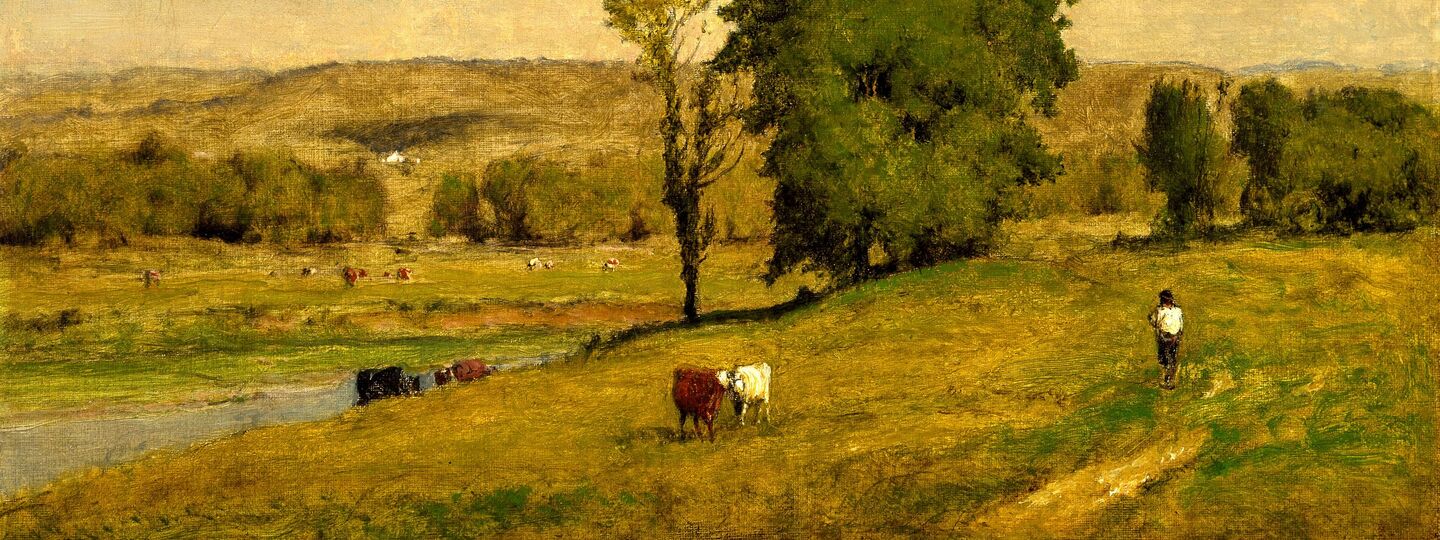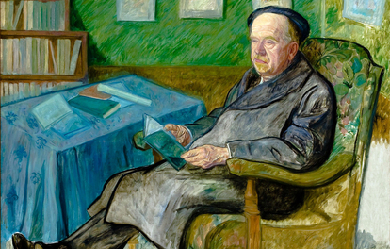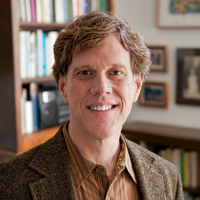
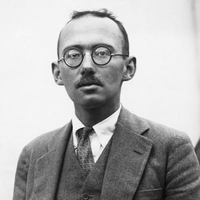
Stephen Vincent Benét /bᵻˈneɪ/ (July 22, 1898– March 13, 1943) was an American author, poet, short story writer, and novelist. Benét is best known for his book-length narrative poem of the American Civil War, John Brown’s Body (1928), for which he won a Pulitzer Prize in 1929, and for two short stories, “The Devil and Daniel Webster” (1936) and “By the Waters of Babylon” (1937). In 2009, The Library of America selected Benét’s story “The King of the Cats” (1929) for inclusion in its two-century retrospective of American Fantastic Tales, edited by Peter Straub. Life and career Early life Benét was born in Bethlehem, Pennsylvania to James Walker Benét, a colonel in the United States Army, and his wife. His grandfather and namesake was a Minorcan descendant born in St. Augustine, Florida, who led the U.S. Army Ordnance Corps, 1874–1891, with the rank of brigadier general; he was a graduate of the United States Military Academy and served in the American Civil War. The younger Benét’s paternal uncle, Laurence Vincent Benét, a graduate of Yale, was an ensign in the United States Navy during the Spanish–American War and later manufactured the French-Hotchkiss machine gun. At about age ten, Benét was sent to the Hitchcock Military Academy. He graduated from The Albany Academy in Albany, New York and Yale University, where he was “the power behind the Yale Lit”, according to Thornton Wilder, a fellow member of the Elizabethan Club. He also edited and contributed light verse to campus humor magazine The Yale Record. Benét published his first book at age 17. He was awarded an M.A. in English upon submission of his third volume of poetry in lieu of a thesis. Benét was also a part-time contributor for the early Time magazine. In 1920-1921 he went to France on a Yale traveling fellowship. There he met Rosemary Carr, whom he married in Chicago in November 1921. Carr was also a writer and poet, and they collaborated on some works. Man of letters Benét helped solidify the place of the Yale Series of Younger Poets Competition and the Yale University Press during his decade-long judgeship of the competition. Benét published the first volumes of James Agee, Muriel Rukeyser, Jeremy Ingalls, and Margaret Walker. He was elected a Fellow of the American Academy of Arts and Sciences in 1931. Benét’s fantasy short story about a devil, The Devil and Daniel Webster (1936) won an O. Henry Award. He furnished the material for Scratch, a one-act opera by Douglas Moore. The story was filmed in 1941 and shown originally under the title All That Money Can Buy. Benét also wrote a sequel, Daniel Webster and the Sea Serpent, in which the man Daniel Webster encounters the Leviathan of biblical legend. Young Benét lived in a home (commonly referred to as Benét House), in Augusta, Georgia. Part of Augusta College (now Georgia Regents University), it was declared a National Historic Landmark in 1971. Benet House, now on the Summerville Campus of Georgia Regents University, was originally part of the Augusta Arsenal. Benet’s father, Col James Walker Benet, along with his wife and daughter, lived in this house while he was the commanding officer of the Augusta Arsenal from approximately August 1911 to February 1919. Stephen Vincent Benet would have visited his parents while they were resident. The local newspaper considered it newsworthy enough to congratulate Benet on winning the Maysfield Prize for best undergraduate poem while Benet attended Yale.(Augusta Chronicle 1/21/1917 p. 21) Benet House was the name assigned to the building when it became the property of Augusta College. Once the residence of the college president, it now serves as space for administrative offices. Benet House was declared a National Historic Landmark in 1971. Death and legacy Benét died of a heart attack in New York City, on March 13, 1943, at the age of 44 and was buried in Evergreen Cemetery in Stonington, Connecticut, where he had owned the historic Amos Palmer House. On April 17, 1943, NBC broadcast a special tribute to the life and works of Benét, which included a performance by Helen Hayes. He was awarded a posthumous Pulitzer Prize in 1944 for Western Star, an unfinished narrative poem on the settling of the United States. The title of Dee Brown’s Bury My Heart at Wounded Knee, a history of Native Americans in the American West in the late nineteenth century, is taken from the final phrase of Benét’s poem “American Names”. The full quotation, "I shall not be there/I shall rise and pass/Bury my heart at Wounded Knee," appears at the beginning of Brown’s book. Benet’s poem is not about the plight of Native Americans, and Benet would have been unlikely to approve of the author’s tendentious approach. Wounded Knee, a village on the Pine Ridge Indian reservation in Oglala Lakota County, South Dakota, was the location of the last major confrontation between the U.S. Army and Native Americans. The event is known formally as the Wounded Knee Massacre, as more than 150 Sioux men, women, and children who were largely unarmed were killed that day. He adapted the Roman myth of the rape of the Sabine Women into the story “The Sobbin’ Women”. It was adapted as the movie musical Seven Brides for Seven Brothers. His play John Brown’s Body was staged on Broadway in 1953, in a three-person dramatic reading featuring Tyrone Power, Judith Anderson, and Raymond Massey, and directed by Charles Laughton. The book of the same name was included in Life Magazine’s list of the 100 outstanding books of 1924–1944. Benét fathered three children: Thomas, Stephanie, and Rachel. His brother, William Rose Benét, was a poet, anthologist and critic who is largely remembered for his desk reference Benet’s Reader’s Encyclopedia (1948). His sister Laura Benét was also an author. Selected works * Five Men and Pompey, a series of dramatic portraits, Poetry, 1915 * The Drug-Shop, or, Endymion in Edmonstoun (Yale University Prize Poem), 1917 * Young Adventure: A book of Poems, 1918 * Heavens and Earth, 1920 * The Beginnings of Wisdom: A Novel, 1921 * Young People’s Pride: A Novel, 1922 * Jean Huguenot: A Novel, 1923 * The Ballad of William Sycamore: A Poem, 1923 * King David: A two-hundred-line ballad in six parts, 1923 * Nerves, 1924 (A play, with John Farrar) * That Awful Mrs. Eaton, 1924 (A play, with John Farrar) * Tiger Joy: A Book of Poems, 1925 * The Mountain Whippoorwill: How Hill-Billy Jim Won the Great Fiddler’s Prize: A Poem., 1925 * Spanish Bayonet, 1926 * John Brown’s Body, 1928 * The Barefoot Saint: A Short Story, 1929 * The Litter of Rose Leaves: A Short Story, 1930 * Abraham Lincoln, 1930 (screenplay with Gerrit Lloyd) * Ballads and Poems, 1915–1930, 1931 * A Book of Americans, 1933 (with Rosemary Carr Benét, his wife) * James Shore’s Daughter: A Novel, 1934 * The Burning City, 1936 (includes 'Litany for Dictatorships’) * The Magic of Poetry and the Poet’s Art, 1936 * By the Waters of Babylon, 1937 * The Headless Horseman: one-act play, 1937 * Thirteen O’Clock, 1937 * Johnny Pye and the Fool Killer: A Short Story, 1938 * Tales Before Midnight: Collection of Short Stories, 1939 * The Ballad of the Duke’s Mercy, 1939 * Elementals, 1940–41 (broadcast) * Freedom’s Hard-Bought Thing, 1941 (broadcast) * Listen to the People, 1941 * A Summons to the Free, 1941 * Cheers for Miss Bishop, 1941 (screenplay with Adelaide Heilbron, Sheridan Gibney) * Selected Works, 1942 (2 vols.) * Short Stories, 1942 * Nightmare at Noon: Short Poem, 1942 (in The Treasury Star Parade, ed. by William A. Bacher) * A Child is Born, 1942 (broadcast) * They Burned the Books, 1942 * They Burned the Books, 1942 (broadcast) * These works were published posthumously: * Western Star, 1943 (unfinished) * Twenty Five Short Stories, 1943 * America, 1944 * O’Halloran’s Luck and Other Short Stories, 1944 * We Stand United, 1945 (radio scripts) * The Bishop’s Beggar, 1946 * The Last Circle, 1946 * Selected Stories, 1947 * From the Earth to the Moon, 1958 References Wikipedia—https://en.wikipedia.org/wiki/Stephen_Vincent_Benét
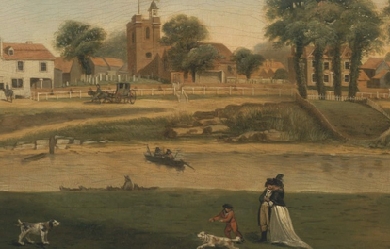
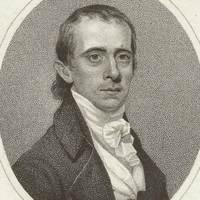
Robert Bloomfield (3 December 1766– 19 August 1823) was an English labouring class poet whose work is appreciated in the context of other self-educated writers such as Stephen Duck, Mary Collier and John Clare. Life Robert Bloomfield was born of a poor family in the village of Honington, Suffolk. His father was a tailor and died of smallpox when the son was a year old. It was from his mother Elizabeth, who kept the village school, that he received the rudiments of education. Apprenticed at the age of eleven to his mother’s brother-in-law, he worked on a farm which was part of the estate of the Duke of Grafton, his future patron. Four years later, owing to his small and weak stature (in adulthood Bloomfield was just five feet tall) he was sent to London to work as a shoemaker under his elder brother George. One of his early duties was to read the papers aloud while the others in the workshop were working and he became particularly interested in the poetry section of The London Magazine. He had his first poem, “The Village Girl”, published in 1786. When his brother George returned to Suffolk in that year, he set up on his own as a cobbler and in 1790 married Mary Ann Church, by whom he was to have five children. The poem that made his reputation, The Farmer’s Boy, was composed in a garret in Bell Alley, Coleman Street. It was influenced by James Thomson’s poem The Seasons. Bloomfield was able to carry some fifty to a hundred finished lines of it in his head at a time until there was opportunity to write them down. The manuscript was declined by several publishers and was eventually shown by his brother George to Capel Lofft, a radical Suffolk squire of literary tastes, who arranged for its publication with woodcuts by Thomas Bewick in 1800. The success of the poem was remarkable, over 25,000 copies being sold in the next two years. Also reprinted in several American editions, it appeared in German translation in Leipzig, translated into French as Le Valet du Fermier in Paris, and in Italian translation in Milan; there was even a Latin translation of parts of it, De Agricolae Puero, Anglicano Poemate celeberrimo excerptum, et in morem Latini Georgice redditum, by the lively Suffolk vicar William Clubbe. The poem was particularly admired by the Suffolk-born painter John Constable who used couplets from it as tags to two paintings: a 'Ploughing Scene’ (shown at the Royal Academy in 1814) and 'A Harvest Field, Reapers, Gleaners’ (shown at the British Institution in 1817), which he noted as deriving from 'Bloomfield’s poem’. It was also admired by Robert Southey, a Romantic poet and future poet laureate. While this success helped reduce his poverty for a while, it also took him away from his work. As a result, the Duke of Grafton, who lived at Euston Hall near the village of Bloomfield’s birth, settled on him a small annuity of £15 and used his influence to gain him employment in the Seal Office to the King’s Bench Court and then at Somerset House, but he worked in neither for long. Meanwhile, Bloomfield’s reputation was increased by the appearance of his Rural Tales (1802), several poems of which were set to music by his brother Isaac. Another of them, “The Miller’s Maid”, was made an opera by John Davy (1763–1824) in 1804 and formed the basis for a two-act melodrama by John Faucit Saville (1807–1855) in 1821. Other publications by Bloomfield included Good Tidings (written in praise of inoculation at the instigation of Edward Jenner, 1804); Wild Flowers or Pastoral and Local Poetry (1806); and The Banks of the Wye (the poetic journal of a walking tour in the footsteps of Wordsworth, 1811). Unfortunately Vernor and Hood, his publishers, went bankrupt and in 1812 Bloomfield was forced to move from London into a cottage rented to him by a friend in the Bedfordshire village of Shefford. There one of his daughters died in 1814 and his wife became insane. In order to support himself he tried to carry on business as a bookseller but failed, and in his later years was reduced to making Aeolian harps which he sold among his friends. With failing eyesight, his own reason threatened by depression, he died in great poverty on 19 August 1823. In order to pay his debts and cover the funeral expenses, his collection of books and manuscripts, and his household effects, had to be auctioned. Allied to this fund-raising was the publication that year of his drama, Hazlewood Hall, and in the following year of The Remains of Robert Bloomfield, which included writing for children on which he had been working for some years and a selection of his correspondence. Poetry Bloomfield’s poetry invites comparison with that of George Crabbe, who was also a native of Suffolk. Both wrote much in iambic pentameter couplets, both provide descriptions of rural life in its hardest and least inviting forms. Bloomfield, however, is more cheerful in tone and his verse is denser and more vigorous. Here, for instance, is the episode in “The Farmer’s Boy” where Giles chops up turnips to feed the livestock in winter: On GILES, and such as Giles, the labour falls, To strew the frequent load where hunger calls. On driving gales sharp hail indignant flies, And sleet, more irksome still, assails his eyes; Snow clogs his feet; or if no snow is seen, The field with all its juicy store to screen, Deep goes the frost, till every root is found A rolling mass of ice upon the ground. No tender ewe can break her nightly fast, Nor heifer strong begin the cold repast, Till Giles with pond’rous beetle foremost go, And scatt’ring splinters fly at every blow; When pressing round him, eager for the prize, From their mixt breath warm exhalations rise. However, such verse is little varied from that of many of Bloomfield’s contemporaries, such as James Montgomery and Ebenezer Elliot whose names, like his, were well known in their time but are scarcely remembered now. Besides such formal productions, he told many light-hearted stories in octosyllabics, some of which are interesting for their employment of Suffolk dialect words, particularly in “The Horkey”. His work served as an inspiration to John Clare, who began publishing his own rural poetry in 1820 and praised Bloomfield’s highly. Robert’s brother, Nathaniel, also published a collection of poetry in 1803, An Essay on War, in Blank Verse, and Other Poems. Byron commented on the brothers in English Bards and Scotch Reviewers (lines 775-86), linking Robert’s name favourably with other poets of humble beginnings such as Burns and Gifford but dismissing Nathaniel’s writing as routine and uninspired. Byron returned to the charge in Hints from Horace with the apostrophe Hark to those lines, narcotically soft, The cobbler-laureats sing to Capel Lofft! (lines 733-4) Although a note makes it clear than Nathaniel is his principal target, he also seems to include 'his brother Bobby’ in the accusation that Lofft 'has spoiled some excellent shoemakers and been accessory to the poetic undoing of many of the industrious poor’. Later Reputation In 1973 Shefford’s secondary school was converted to a middle school (for pupils aged 9–13) and named after the poet. In 2000 the Robert Bloomfield Society was founded to promote awareness of his life and work and has encouraged scholarly publications relating to him. A revised and enlarged selection of his poems was published by Trent Editions in 2007. Recent studies of his poetry evaluate it within its social as well as its literary context. References Wikipedia—https://en.wikipedia.org/wiki/Robert_Bloomfield
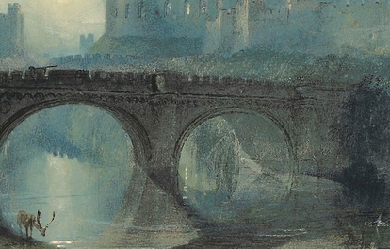
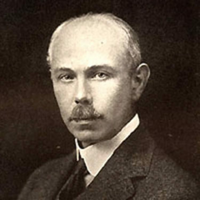
Francis William Bourdillon (22 March 1852 at Runcorn, Cheshire– 13 January 1921 at Buddington, Midhurst) was a British poet and translator. He is known also as bibliophile and scholar. Life Born in Runcorn, Cheshire, he was the eldest son of Rev. Francis Bourdillon, the author, at that time perpetual curate of Runcorn. He was educated at Haileybury College and Worcester College, Oxford, graduating B.A. 1877, M.A. 1882. From 1876 to 1879, he acted as tutor to the sons of Prince Christian of Schleswig-Holstein. Later Bourdillon lived in Eastbourne, and near Midhurst, Sussex. His friends included Audrey Boyle (1853/4–1916), later as wife of Hallam Tennyson, 2nd Baron Tennyson known as Audrey Lady Tennyson. Writer Bourdillon is known for his poetry, and in particular for the single short poem “The Night Has a Thousand Eyes”. He had many collections published, including Among The Flowers, And Other Poems (1878), Minuscula: lyrics of nature, art and love (1897, siftings of three smaller volumes of verse published anonymously at Oxford in 1891, 1892, and 1894), Gerard and Isabel: a Romance in Form of Cantefable (1921), and also Chryseis, and Preludes and Romances (1908). In 1896 he published Nephelé, a romantic novel. He translated Aucassin et Nicolette as Aucassin and Nicolet (1887), and he wrote the scholarly The Early Editions of the Roman de la Rose (1906) as well as Russia Reborn (1917) and various essays which the Religious Tract Society published. Family Bourdillon married Agnes Smyth, and they lived at Buddington, near Midhurst. They had three children. References Wikipedia—https://en.wikipedia.org/wiki/Francis_William_Bourdillon
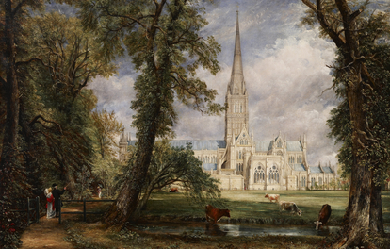
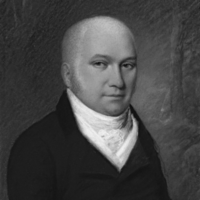
Thomas Lovell Beddoes (30 June 1803– 26 January 1849) was an English poet, dramatist and physician. Biography Born in Clifton, Bristol, England, he was the son of Dr. Thomas Beddoes, a friend of Samuel Taylor Coleridge, and Anna, sister of Maria Edgeworth. He was educated at Charterhouse and Pembroke College, Oxford. He published in 1821 The Improvisatore, which he afterwards endeavoured to suppress. His next venture, a blank-verse drama called The Bride’s Tragedy (1822), was published and well reviewed, and won for him the friendship of Barry Cornwall. Beddoes’ work shows a constant preoccupation with death. In 1824, he went to Göttingen to study medicine, motivated by his hope of discovering physical evidence of a human spirit which survives the death of the body. He was expelled, and then went to Würzburg to complete his training. He then wandered about practising his profession, and expounding democratic theories which got him into trouble. He was deported from Bavaria in 1833, and had to leave Zürich, where he had settled, in 1840. He continued to write, but published nothing. He led an itinerant life after leaving Switzerland, returning to England only in 1846, before going back to Germany. He became increasingly disturbed, and committed suicide by poison at Basel, in 1849, at the age of 45. For some time before his death he had been engaged on a drama, Death’s Jest Book, which was published in 1850 with a memoir by his friend, T. F. Kelsall. His Collected Poems were published in 1851. Evaluation Critics have faulted Beddoes as a dramatist. According to Arthur Symons, “of really dramatic power he had nothing. He could neither conceive a coherent plot, nor develop a credible situation.” His plots are convoluted, and such was his obsession with the questions posed by death that his characters lack individuation; they all struggle with the same ideas that vexed Beddoes. But his poetry is “full of thought and richness of diction”, in the words of John William Cousin, who praised Beddoes’ short pieces such as “If thou wilt ease thine heart” (from Death’s Jest-Book, Act II) and “If there were dreams to sell” ("Dream-Pedlary") as “masterpieces of intense feeling exquisitely expressed”. Lytton Strachey referred to Beddoes as “the last Elizabethan”, and said that he was distinguished not for his “illuminating views on men and things, or for a philosophy”, but for the quality of his expression. Philip B. Anderson said the lyrics of Death’s Jest Book, exemplified by “Sibylla’s Dirge” and “The Swallow Leaves Her Nest”, are “Beddoes’ best work. These lyrics display a delicacy of form, a voluptuous horror, an imagistic compactness and suggestiveness, and, occasionally, a grotesque comic power that are absolutely unique.” References Wikipedia—https://en.wikipedia.org/wiki/Thomas_Lovell_Beddoes
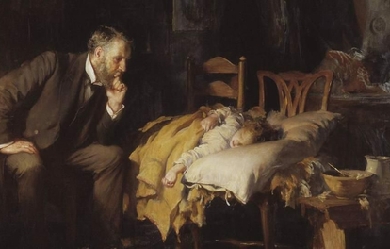
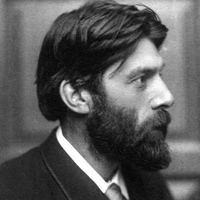
Robert Seymour Bridges, OM (23 October 1844– 21 April 1930) was Britain’s poet laureate from 1913 to 1930. A doctor by training, he achieved literary fame only late in life. His poems reflect a deep Christian faith, and he is the author of many well-known hymns. It was through Bridges’ efforts that Gerard Manley Hopkins achieved posthumous fame. Personal and professional life Bridges was born in Walmer, Kent, in England, and educated at Eton College and Corpus Christi College, Oxford. He went on to study medicine in London at St Bartholomew’s Hospital, intending to practise until the age of forty and then retire to write poetry. He practised as a casualty physician at his teaching hospital (where he made a series of highly critical remarks about the Victorian medical establishment) and subsequently as a full physician to the Great (later Royal) Northern Hospital. He was also a physician to the Hospital for Sick Children. Lung disease forced him to retire in 1882, and from that point on he devoted himself to writing and literary research. However, Bridges’ literary work started long before his retirement, his first collection of poems having been published in 1873. In 1884 he married Monica Waterhouse, daughter of Alfred Waterhouse R.A., and spent the rest of his life in rural seclusion, first at Yattendon, then at Boars Hill, Berkshire, where he died. He was elected to the Fellowship of the Royal College of Physicians of London in 1900. He was appointed Poet Laureate in 1913, the only medical graduate to have held the office. He was the father of poet Elizabeth Daryush. Literary work As a poet Bridges stands rather apart from the current of modern English verse, but his work has had great influence in a select circle, by its restraint, purity, precision and delicacy yet strength of expression. It embodies a distinct theory of prosody. Bridges’ faith underpinned much of his work. In the book Milton’s Prosody, he took an empirical approach to examining Milton’s use of blank verse, and developed the controversial theory that Milton’s practice was essentially syllabic. He considered free verse to be too limiting, and explained his position in the essay “Humdrum and Harum-Scarum”. His own efforts to “free” verse resulted in the poems he called “Neo-Miltonic Syllabics”, which were collected in New Verse (1925). The metre of these poems was based on syllables rather than accents, and he used the principle again in the long philosophical poem The Testament of Beauty (1929), for which he received the Order of Merit. His best-known poems, however, are to be found in the two earlier volumes of Shorter Poems (1890, 1894). He also wrote verse plays, with limited success, and literary criticism, including a study of the work of John Keats. Bridges’ poetry was privately printed in the first instance, and was slow in making its way beyond a comparatively small circle of his admirers. His best work is to be found in his Shorter Poems (1890), and a complete edition (to date) of his Poetical Works (6 vols.) was published in 1898-1905. Despite being made poet laureate in 1913, Bridges was never a very well-known poet and only achieved his great popularity shortly before his death with The Testament of Beauty. However, his verse evoked response in many great British composers of the time. Among those to set his poems to music were Hubert Parry, Gustav Holst and later Gerald Finzi. During the First World War, Bridges joined the group of writers assembled by Charles Masterman as part of Britain’s War Propaganda Bureau at Wellington House. At Oxford, Bridges became friends with Gerard Manley Hopkins, who is now considered a superior poet but who owes his present fame to Bridges’ efforts in arranging the posthumous publication (1918) of his verse. Bridges received advice from the young phonetician David Abercrombie on the reformed spelling system he was devising for the publication of his collected essays (later published in seven volumes by Oxford University Press, with the help of the distinguished typographer Stanley Morison, who designed the new letters). Thus Robert Bridges contributed to phonetics and he was also a founder member of the Society for Pure English. Hymnody Bridges made an important contribution to hymnody with the publication in 1899 of his Yattendon Hymnal, which he created specifically for musical reasons. This collection of hymns, although not a financial success, became a bridge between the Victorian hymnody of the last half of the 19th century and the modern hymnody of the early 20th century. Bridges wrote and also translated historic hymns, and many of these were included in Songs of Syon (1904) and the later English Hymnal (1906). Several of Bridges’ hymns and translations are still in use today: “Thee will I love, my God and King” “Happy are they that love God” “Rejoice, O land, in God thy might” The Baptist Hymn Book, University Press, Oxford 1962 “Ah, Holy Jesus” (Johann Heermann, 1630) “All My Hope on God Is Founded” (Joachim Neander, c. 1680) “Jesu, Joy of Man’s Desiring” (Martin Jahn, 1661) “O Gladsome Light” (Phos Hilaron) “O Sacred Head, sore wounded” (Paulus Gerhardt, 1656) “O Splendour of God’s Glory Bright” (Ambrose, 4th century) “When morning gilds the skies” (stanza 3; Katholisches Gesangbuch, 1744) Major works * Dates given are of first publication and significant revisions. Poetry collections * The Growth of Love (1876; 1889; 1898), a sequence of (24; 79; 69) sonnets * Prometheus the Firegiver: A Mask in the Greek Manner (1883) * Eros and Psyche: A Narrative Poem in Twelve Measures (1885; 1894), a story from the Latin of Apuleius * Shorter Poems, Books I–IV (1890) * Shorter Poems, Books I–V (1894) * New Poems (1899) * Demeter: A Mask (1905), performed 1904 * Ibant Obscuri: An Experiment in the Classical Hexameter (1916), with reprint of summary of Stone’s Prosody, accompanied by 'later observations & modifications’ * October and Other Poems (1920) * The Tapestry: Poems (1925), in neo-Miltonic syllabics * New Verse (1926), includes verse of The Tapestry * The Testament of Beauty (1929) Verse drama * Nero (1885), an historical tragedy; called The First Part of Nero subsequent to the publication of Nero: Part II * The Feast of Bacchus (1889); partly translated from the Heauton-Timoroumenos of Terence * Achilles in Scyros (1890), a drama in a mixed manner * Palicio (1890), a romantic drama in five acts in the Elizabethan manner * The Return of Ulysses (1890), a drama in five acts in a mixed manner * The Christian Captives (1890), a tragedy in five acts in a mixed manner; on the same subject as Calderón’s El Principe Constante * The Humours of the Court (1893), a comedy in three acts; founded on Calderón’s El secreto á voces and on Lope de Vega’s El Perro del hortelano * Nero, Part II (1894) Prose * Milton’s Prosody, With a Chapter on Accentual Verse (1893; 1901; 1921), based on essays published in 1887 and 1889 * Keats (1895) * Hymns from the Yattendon Hymnal (1899) * The Spirit of Man (1916) * Poems of Gerard Manley Hopkins (1918), edited with notes by R.B. * The Necessity of Poetry (1918) * Collected Essays, Papers, Etc. (1927–36) References Wikipedia—https://en.wikipedia.org/wiki/Robert_Bridges
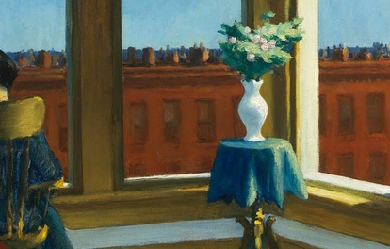
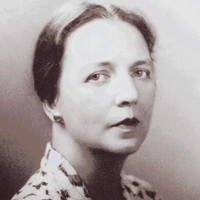
Louise Bogan (August 11, 1897– February 4, 1970) was an American poet. She was appointed the fourth Poet Laureate to the Library of Congress in 1945. As poetry editor of The New Yorker magazine for nearly 40 years, Bogan played a major role in shaping mainstream poetic sensibilities of the mid-20th Century. The Poetry Foundation notes that Bogan has been called by some critics the most accomplished woman poet of the twentieth century. It further notes that, “Some critics have placed her in a category of brilliant minor poets described as the ”reactionary generation." This group eschewed the prevailing Modernist forms that would come to dominate the literary landscape of the era in favor of more traditional techniques. Dictionary of Literary Biography contributor Brett C. Millier named Bogan “one of the finest lyric poets America has produced,” and added that “the fact that she was a woman and that she defended formal, lyric poetry in an age of expansive experimentation made evaluation of her work, until quite recently, somewhat condescending.” Biography Early years Bogan was born in Livermore Falls, Maine, where her father, Daniel Bogan, worked for various paper mills and bottling factories. She spent most of her childhood years with her parents and brother growing up in mill towns in Maine, New Hampshire, and Massachusetts, where she and her family lived in working-class hotels and boardinghouses until 1904. With the help of a female benefactor, Bogan was able to attend the Girls’ Latin School for five years, which eventually gave her the opportunity to attend Boston University. In 1916, after only completing her freshman year and giving up a fellowship to Radcliffe, she left the university to marry Curt Alexander, a corporal in the U.S. Army, but their marriage ended in 1918. Bogan moved to New York to pursue a career in writing, and their only daughter, Maidie Alexander, was left under the care of Bogan’s parents. After her first husband’s death in 1920, she left and spent a few years in Vienna, where she explored her loneliness and her new identity in verse. She returned to New York City and published her first book of poetry, Body of This Death: Poems, in 1923, meeting that year the poet and novelist Raymond Holden. They were married by 1925. Four years later, she published her second book of poetry, Dark Summer: Poems, and shortly after was hired as a poetry editor for The New Yorker. She was divorced from Holden in 1937. Career Bogan’s poetic style was unlike that of Ezra Pound or T. S. Eliot. Suzanne Clark, an English professor from the University of Oregon, stated that Bogan often refers to her female speakers as “the locus of intemperate, dangerous, antisocial desires.” This coincides with the notion that Bogan brought a different perspective to the traditional viewpoint of women. Not only was it difficult being a female poet in the 1930s and 1940s, but her lower-middle-class Irish background and limited education also brought on much ambivalence and contradiction for Louise Bogan. She even refused to review women poets in her early career and stated, “I have found from bitter experience that one woman poet is at a disadvantage in reviewing another, if the review be not laudatory.” Bogan did not discuss intimate details of her life (and disdained such confessional poets as Robert Lowell and John Berryman). Most of her work was published before 1938. This includes Body of This Death (1923), Dark Summer (1929), and The Sleeping Fury (1937). She also translated works by Ernst Jünger, Goethe, and Jules Renard. Later in Bogan’s life, a volume of her collected works, The Blue Estuaries: Poems 1923-1968, was published with such poems as “The Dream” and “Women.” In late 1969, shortly before her death, she ended her thirty-eight year career as a reviewer for The New Yorker, stating, “No more pronouncements on lousy verse. No more hidden competition. No more struggling not to be a square.” One of her admirers was W. H. Auden. Her poetry was published in The New Republic, The Nation, Poetry: A Magazine of Verse, Scribner’s, and Atlantic Monthly. Her Collected Poems: 1923-1953 won her the Bollingen award in 1955 as well as an award from the Academy of American Poets in 1959, and she was the poetry reviewer of The New Yorker from 1931 until 1969, when she retired. She was a strong supporter, as well as a friend, of the poet Theodore Roethke. In a letter to Edmund Wilson, she detailed a raucous affair that she and the yet-unpublished Roethke carried on in 1935, during the time between his expulsion from Lafayette College and his return to Michigan. At the time she seemed little impressed by what she called his “very, very small lyrics”; she seems to have viewed the affair as, at most, a possible source for her own work (see What the Woman Lived: Collected letters of Louise Bogan). On February 4, 1970, Louise Bogan died of a heart attack in New York City. The Archives and Special Collections at Amherst College holds some of her papers. A number of autobiographical pieces were published posthumously in Journey around My Room (1980). Elizabeth Frank’s biography of Louise Bogan, Louise Bogan: A Portrait, won a Pulitzer Prize in 1986. Ruth Anderson’s sound poem I Come Out of Your Sleep (revised and recorded on Sinopah 1997 XI) is constructed from speech sounds in Bogan’s poem “Little Lobelia.” “I cannot believe that the inscrutable universe turns on an axis of suffering; surely the strange beauty of the world must somewhere rest on pure joy!”– Louise Bogan In 1923, Louise Bogan released her first volume of poetry, Body of this Death, containing her poem “Medusa”. Though open to interpretation, “Medusa” is a poem that revolves around the petrification of the speaker who contemplates the concept of time. In the poem, after the speaker bears witness to the apparition of the Gorgon Medusa, the speaker ponders on how nature and life will continue, as “the water will always fall, and will not fall” and “the grass will always be growing for hay” while “I shall stand here like a shadow” and “nothing will ever stir”. While many interpretations of the poem exist, one possible explanation for the bleakness of this poem may revolve around Bogan’s depression and solitude after divorcing from her first husband and living in poverty with a daughter in hand. The idea that one would become petrified and lost in time by Medusa is similar to a feeling of loss and despair as one feels helpless and stuck in a situation where one feels their situation is unchangeable. Brett C. Millier, a Professor of Literature at Middlebury College describes Bogan’s poetry as one where “Betrayal, particularly sexual betrayal, is a constant theme.” At a time where she most likely felt betrayed by her husband and society, Bogan feels like the speaker in “Medusa”, stuck in a dead scene where her eyes could no longer drift away to a better life. Personal life Bogan married twice. In 1916 she married a soldier, Curt Alexander, and had one daughter, but the couple separated before Alexander’s death in 1920. She was married to poet Raymond Holden from July 10, 1925 to 1937. Despite the hardships Bogan encountered during the twenties and thirties, she was able to experience the fascinations of Renaissance painting, sculpture, and ornament. References Modern American Poetry: Louise Bogan (1897-1970) Biography at poets.org The Dream by Louise Bogan Vita: Suzanne Clark Louise Bogan Quotes External links Bogan Papers, Amherst College Archives and Special Collections The Louise Bogan Papers at Washington University in St. Louis Modern American Poetry, critical essays on Bogan’s works Academy of American Poets Works by or about Louise Bogan at Internet Archive Works by Louise Bogan at LibriVox (public domain audiobooks)
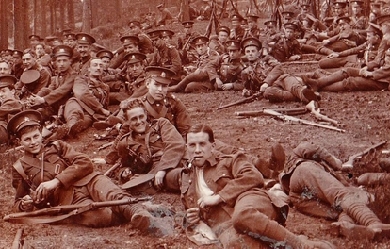
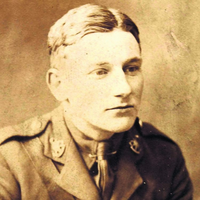
Edmund Charles Blunden, CBE, MC (1 November 1896– 20 January 1974) was an English poet, author and critic. Like his friend Siegfried Sassoon, he wrote of his experiences in World War I in both verse and prose. For most of his career, Blunden was also a reviewer for English publications and an academic in Tokyo and later Hong Kong. He ended his career as Professor of Poetry at the University of Oxford. Biography Early years and World War I Born in London, Blunden was the eldest of the nine children of Charles Edmund Blunden (1871–1951) and his wife, Georgina Margaret née Tyler, who were joint-headteachers of Yalding school. Blunden was educated at Christ’s Hospital and The Queen’s College, Oxford. In August 1915 Blunden was commissioned as a second lieutenant in the Royal Sussex Regiment and served with them right up to the end of World War I, taking part in the actions at Ypres and the Somme, and receiving the Military Cross in the process. Unusually for a junior infantry officer, Blunden survived nearly two years in the front line without physical injury, but for the rest of his life bore mental scars from his experiences. With characteristic self-deprecation he attributed his survival to his diminutive size: he made “an inconspicuous target”. His own account of his frequently traumatic experiences was published in 1928 under the title Undertones of War. Career as a writer Blunden left the army in 1919 and took up the scholarship at Oxford that he had won while still at school. On the same English Literature course was Robert Graves, and the two were close friends during their time at Oxford together, but Blunden found university life unsatisfactory and left in 1920 to take up a literary career, at first acting as assistant to Middleton Murry on the Athenaeum. An early supporter was Siegfried Sassoon, who became a lifelong friend. In 1920 Blunden published a collection of poems, The Waggoner, and with Alan Porter edited the poems of John Clare (mostly from Clare’s manuscript). Blunden’s next book of poems, The Shepherd, published in 1922 won the Hawthornden Prize, but his poetry, though well reviewed, did not provide enough to live on, and in 1924 he accepted the post of Professor of English at the University of Tokyo. He returned to England in 1927, and was literary editor of the Nation for a year. In 1927 he published a short book, On the Poems of Henry Vaughan, Characteristics and Intimations, with his principal Latin poems carefully translated into English verse (London: H. Cobden-Sanderson, 1927), expanding and revising an essay that he had published in November 1926 in the London Mercury. In 1931 he returned to Oxford as a Fellow of Merton College, where he was highly regarded as a tutor. During his years in Oxford, Blunden published extensively: several collections of poetry including Choice or Chance (1934) and Shells by a Stream (1944), prose works on Charles Lamb; Edward Gibbon; Keats’s publisher; Percy Bysshe Shelley (Shelley: A Life Story); John Taylor; and Thomas Hardy; and a book about a game he loved, Cricket Country (1944). He returned to full-time writing in 1944, becoming assistant editor of The Times Literary Supplement. In 1947 he returned to Japan as a member of the British liaison mission in Tokyo. In 1953, after three years back in England he accepted the post of Professor of English Literature at the University of Hong Kong. Blunden retired in 1964 and settled in Suffolk. In 1966 he was nominated for the Oxford Professorship of Poetry in succession to Robert Graves; with some misgivings he agreed to stand and was elected by a large majority over the other candidate, Robert Lowell. However, he now found the strain of public lecturing too much for him, and after two years he resigned. He died of a heart attack at his home at Long Melford, Suffolk, on 20 January 1974, and is buried in the churchyard of Holy Trinity Church, Long Melford. Personal life Blunden was married three times. While still in the army he met and married Mary Daines in 1918. They had three children, the first of whom died in infancy. They divorced in 1931, and in 1933 Blunden married Sylva Norman, a young novelist and critic. That marriage, which was childless, was dissolved in 1945, and in the same year he married Claire Margaret Poynting (1918-2000), a former pupil of his; they had four daughters. While in Japan in the summer of 1925, he met Aki Hayashi, with whom he began a relationship. When Blunden returned to England in 1927, Aki accompanied him and would become his secretary. The relationship later changed from a romantic one to a platonic friendship, and they remained in contact for the rest of her life. Blunden’s love of cricket, celebrated in his book Cricket Country, is described by the biographer Philip Ziegler as fanatical. Blunden and his friend Rupert Hart-Davis regularly opened the batting for a publisher’s eleven in the 1930s (Blunden insisted on batting without gloves). An affectionate obituary tribute in The Guardian commented, “He loved cricket... and played it ardently and very badly”, while in a review of Cricket Country, George Orwell described him as “the true cricketer”: The test of a true cricketer is that he shall prefer village cricket to 'good’ cricket [.... Blunden’s] friendliest memories are of the informal village game, where everyone plays in braces, where the blacksmith is liable to be called away in mid-innings on an urgent job, and sometimes, about the time when the light begins to fail, a ball driven for four kills a rabbit on the boundary. In a 2009 appreciation of the book and its author, Bangalore writer Suresh Menon writes, Any cricket book that talks easily of Henry James and Siegfried Sassoon and Ranji and Grace and Richard Burton (the writer, not the actor) and Coleridge is bound to have a special charm of its own. As Blunden says, “The game which made me write at all, is not terminated at the boundary, but is reflected beyond, is echoed and varied out there among the gardens and the barns, the dells and the thickets, and belongs to some wider field.” Perhaps that is what all books on cricket are trying to say. Blunden had a robust sense of humour. In Hong Kong he relished linguistic misunderstandings such as those of the restaurant that offered “fried prawn’s balls” and the schoolboy who wrote, “In Hong Kong there is a queer at every bus-stop.” His fellow poets’ regard for Blunden was illustrated by the contributions to a dinner in his honour for which poems were specially written by Cecil Day-Lewis and William Plomer; T. S. Eliot and Walter de la Mare were guests; and Siegfried Sassoon provided the Burgundy. Honours Blunden’s public honours included the C.B.E., 1951; the Queen’s Gold Medal for Poetry, 1956; The Royal Society of Literature’s Benson Medal; the Order of the Rising Sun, 3rd Class (Japan), 1963; and Honorary Membership of the Japan Academy. On 11 November 1985, Blunden was among 16 Great War poets commemorated on a slate stone unveiled in Poets’ Corner in Westminster Abbey The inscription on the stone was written by fellow Great War poet, Wilfred Owen. It reads: “My subject is War, and the pity of War. The Poetry is in the pity.” Works * = * Blunden’s output was prolific. To those who thought he published too much he quoted Walter de la Mare’s observation that time was the poet’s best editor. His books of poetry include Poems 1913 and 1914 (1914); Poems Translated from the French (1914); Three Poems (1916); The Barn (1916); The Silver Bird of Herndyke Mill; Stane Street; The Gods of the World Beneath, (1916); The Harbingers (1916); Pastorals (1916); The Waggoner and Other Poems (1920); The Shepherd, and Other Poems of Peace and War (1922); Old Homes (1922); To Nature: New Poems (1923); Dead Letters (1923); Masks of Time: A New Collection of Poems Principally Meditative (1925); Japanese Garland (1928); Retreat (1928); Winter Nights: A Reminiscence (1928); Near and Far: New Poems (1929); A Summer’s Fancy (1930); To Themis: Poems on Famous Trials (1931); Constantia and Francis: An Autumn Evening, (1931); Halfway House: A Miscellany of New Poems, (1932); Choice or Chance: New Poems (1934); Verses: To H. R. H. The Duke of Windsor, (1936); An Elegy and Other Poems (1937); On Several Occasions (1938); Poems, 1930–1940 (1940); Shells by a Stream (1944); After the Bombing, and Other Short Poems (1949); Eastward: A Selection of Verses Original and Translated (1950); Records of Friendship (1950); A Hong Kong House (1959); Poems on Japan (1967). * Artists Rifles, an audiobook CD published in 2004, includes a reading of Concert Party, Busseboom by Blunden himself, recorded in 1964 by the British Council. Other Great War poets heard on the CD include Siegfried Sassoon, Edgell Rickword, Robert Graves, David Jones and Lawrence Binyon. Blunden can also be heard on Memorial Tablet, an audiobook of readings by Sassoon issued in 2003. References Wikipedia—https://en.wikipedia.org/wiki/Edmund_Blunden
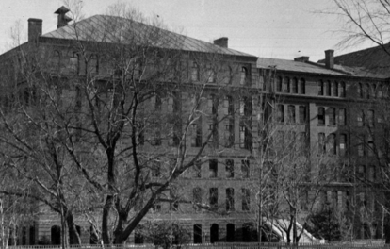
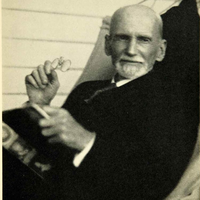
Gamaliel Bradford (October 9, 1863– April 11, 1932) was an American biographer, critic, poet, and dramatist. Born in Boston, Massachusetts, the sixth of seven men called Gamaliel Bradford in unbroken succession, of whom the first, Gamaliel Bradford, was a great-grandson of Governor William Bradford of the Plymouth Colony. Bradford attended Harvard University briefly with the class of 1886, then continued his education with a private tutor, but is said to have been educated “mainly by ill-health and a vagrant imagination.” As an adult, Bradford lived in Wellesley, Massachusetts. The building and student newspaper for the Wellesley High School (where Sylvia Plath received her secondary school education) were named after Gamaliel Bradford. The town changed the name of the building to Wellesley High School, but the newspaper maintains Bradford’s name. In his day Bradford was regarded as the “Dean of American Biographers.” He is acknowledged as the American pioneer of the psychographic form of written biographies, after the style developed by Lytton Strachey. Despite suffering poor health during most of his life, Bradford wrote 114 biographies over a period of 20 years. Bibliography * A Pageant of Life (poetry) * A Prophet of Joy (poetry) * Shadow Verses (poetry) * Unmade in Heaven (drama) * Lee, the American * American Portraits, 1875-1900 * Union Portraits * Confederate Portraits, 1914. * Portraits of Women * Portraits of American Women * Saints and Sinners * A Naturalist of Souls: Studies in Psychography * Life and I (autobiography) * Elizabethan Women, 1936. Articles * “Government in the United States,” The Contemporary Review, Vol. XLVIII, July/December 1885. * “Municipal Government,” Scribners, October 1887. * “Journalism and Permanence,” The North American Review, August 1915. * “A Confederate Pepys,” The American Mercury, December 1925. References Wikipedia—https://en.wikipedia.org/wiki/Gamaliel_Bradford_(biographer)
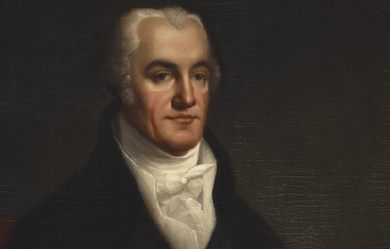
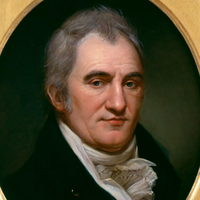
Joel Barlow (March 24, 1754– December 26, 1812) was an American poet, diplomat, and politician. In politics, he supported the French Revolution and was an ardent Jeffersonian. In his own time, Barlow was known especially for the epic Vision of Columbus, though modern readers may be more familiar with The Hasty-Pudding (1793). He also helped draft the Treaty of Tripoli in 1796, which includes the controversial and disputed phrase: “the Government of the United States of America is not, in any sense, founded on the Christian religion”.
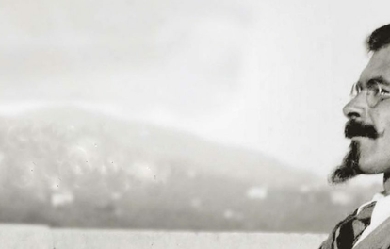
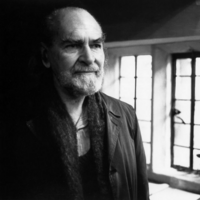
Basil Cheesman Bunting (1 March 1900– 17 April 1985) was a significant British modernist poet whose reputation was established with the publication of Briggflatts in 1966. He had a lifelong interest in music that led him to emphasise the sonic qualities of poetry, particularly the importance of reading poetry aloud. He was an accomplished reader of his own work. Life and career Born into a Quaker family in Scotswood-on-Tyne, Northumberland, he studied at two Quaker schools: from 1912 to 1916 at Ackworth School in the West Riding of Yorkshire and from 1916 to 1918 at Leighton Park School in Berkshire. His Quaker education strongly influenced his pacifist opposition to the First World War, and in 1918 he was arrested as a conscientious objector having been refused recognition by the tribunals and refusing to comply with a notice of call-up. Handed over to the military, he was court-martialled for refusing to obey orders, and served a sentence of more than a year in Wormwood Scrubs and Winchester prisons. Bunting’s friend Louis Zukofsky described him as a "conservative/anti-fascist/imperialist", though Bunting himself listed the major influences on his artistic and personal outlook somewhat differently as “Jails and the sea, Quaker mysticism and socialist politics, a lasting unlucky passion, the slums of Lambeth and Hoxton ...” These events were to have an important role in his first major poem, “Villon” (1925). “Villon” was one of a rather rare set of complex structured poems that Bunting labelled “sonatas,” thus underlining the sonic qualities of his verse and recalling his love of music. Other “sonatas” include “Attis: or, Something Missing,” “Aus Dem Zweiten Reich,” “The Well of Lycopolis,” “The Spoils” and, finally, “Briggflatts.” After his release from prison in 1919, traumatised by the time spent there, Bunting went to London, where he enrolled in the London School of Economics, and had his first contacts with journalists, social activists and Bohemia. Bunting was introduced to the works of Ezra Pound by Nina Hamnett who lent him a copy of Homage to Sextus Propertius. The glamour of the cosmopolitan modernist examples of Nina Hamnett and Mina Loy seems to have influenced Bunting in his later move from London to Paris. After travelling in Northern Europe, Bunting left the London School of Economics without a degree and went to France. There, in 1923, he became friendly with Ezra Pound, who years later would dedicate his Guide to Kulchur (1938) to both Bunting and Louis Zukofsky, “strugglers in the desert”. Between February and October 1927, Bunting wrote articles and reviews for The Outlook, and then became its music critic until the magazine ceased publication in 1928. Bunting’s poetry began to show the influence of the friendship with Pound, whom he visited in Rapallo, Italy, and later settled there with his family from 1931 to 1933. He was published in the Objectivist issue of Poetry magazine, in the Objectivist Anthology, and in Pound’s Active Anthology. During the Second World War, Bunting served in British Military Intelligence in Persia. After the war, in 1948, he left government service to become the correspondent for The Times of London, in Iran. He married an Iranian woman– Sima Alladian– whilst continuing his intelligence work with the Anglo-Iranian Oil Company Tehran, until he was expelled by Mohammad Mossadegh in 1952. Back in Newcastle, he worked as a journalist on the Evening Chronicle until his rediscovery during the 1960s by young poets, notably Tom Pickard and Jonathan Williams, who were interested in working in the modernist tradition. In 1965, he published his major long poem, Briggflatts, named after the Quaker village in Cumbria where he is now buried. In later life he published Advice to Young Poets, beginning "I SUGGEST / 1. Compose aloud; poetry is a sound.” Bunting died in 1985 in Hexham, Northumberland. The Basil Bunting Poetry Award and Young Person’s Prize, administered by Newcastle University, are open internationally to any poet writing in English. Briggflatts Divided into five parts, Briggflatts is an autobiographical long poem, looking back on teenage love and on Bunting’s involvement in the high modernist period. In addition, Briggflatts can be read as a meditation on the limits of life and a celebration of Northumbrian culture and dialect, as symbolised by events and figures like the doomed Viking King Eric Bloodaxe. The critic Cyril Connolly was among the first to recognise the poem’s value, describing it as “the finest long poem to have been published in England since T. S. Eliot’s Four Quartets”. Portrait bust of Basil Bunting Basil Bunting sat in Northumberland for sculptor Alan Thornhill, with a resulting terracotta (for bronze) in existence. The correspondence file relating to the Bunting portrait bust is held as part of the Thornhill Papers (2006:56) in the archive of the Henry Moore Foundation’s Henry Moore Institute in Leeds and the terracotta remains in the collection of the artist. The 1973 portrait is displayed in the Burton (2014) biography of Bunting. In popular culture Mark Knopfler wrote a song, titled 'Basil’, about his time as a Saturday afternoon copy boy on the Newcastle Evening Chronicle when Bunting worked there. The song was recorded for Knopfler’s 2015 album Tracker. Books * 1930: Redimiculum Matellarum (privately printed) * 1950: Poems (Cleaners’ Press, 1950) revised and published as Loquitur (Fulcrum Press, 1965). * 1951: The Spoils * 1965: First Book of Odes * 1965: Ode II/2 * 1966: Briggflatts: An Autobiography * 1967: Two Poems * 1967: What the Chairman Told Tom * 1968: Collected Poems * 1972: Version of Horace * 1991: Uncollected Poems (posthumous, edited by Richard Caddel) * 1994: The Complete Poems (posthumous, edited by Richard Caddel) * 1999: Basil Bunting on Poetry (posthumous, edited by Peter Makin) * 2000: Complete Poems (posthumous, edited by Richard Caddel) * 2009: Briggflatts (with audio CD and video DVD) * 2012: Bunting’s Persia (Translations by Basil Bunting. Edited by Don Share) References Wikipedia—https://en.wikipedia.org/wiki/Basil_Bunting
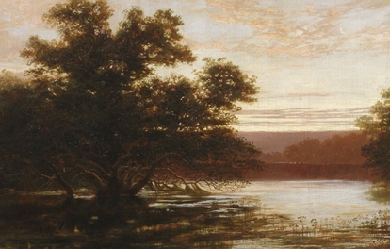
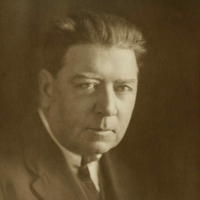
Christopher John Brennan (1 November 1870– 5 October 1932) was an Australian poet and scholar. Biography Brennan was born in Sydney, to Christopher Brennan (d. 1919), a brewer, and his wife Mary Ann née Carroll (d. 1924), both Irish immigrants. His education took place at two schools in Sydney: he first attended St Aloysius’ College, and after gaining a scholarship from Patrick Moran, he boarded at St Ignatius’ College, Riverview. Brennan entered the University of Sydney in 1888, taking up studies in the Classics, and won a travelling scholarship to Berlin. There he met his future wife, Anna Elisabeth Werth; there, also, he encountered the poetry of Stéphane Mallarmé. About this time, he decided to become a poet. In 1893 Brennan’s article “On the Manuscripts of Aeschylus” appeared in the Journal of Philology, Brennan began forming a theory about the descent of Aeschylus’ extant manuscripts in 1888. Returning to Australia, Brennan took up a position as a cataloguer in the public library, before being given a position at the University of Sydney. In 1914, he produced his major work, Poems: 1913. After Brennan’s marriage broke up in 1922, he went to live with Violet Singer, the 'Vie’ of his later poems, and, as a result of both his divorce and increasing drunkenness, he was removed from his position at the University in June 1925. The death of Singer in an accident left him distraught, and he spent most of his remaining years in poverty. Brennan died in 1932 from cancer. Legacy Brennan influenced Australian writers of his own generation and many who succeeded him, including R. D. Fitzgerald, A.D. Hope, Judith Wright and James McAuley. In remembrance, the Fellowship of Australian Writers established the Christopher Brennan Award which is presented annually to an Australian poet, recognising a lifetime achievement in poetry. Brennan Hall and Library at St John’s College within the University of Sydney, the Christopher Brennan building in the University’s Arts Faculty, and the main library at Saint Ignatius’ College, Riverview are named in his honour. Bibliography * Sir Roger de Coverley, Selections from The Spectator (Sydney: Turner and Henderson, 1892). Edited with: A. B. Piddington. * XVIII Poems: Being the First Collection of Verse and Prose (Sydney: privately stylographed, 1897). * XXI Poems: MDCCCXCIII-MDCCCXCVII: Towards the Source (Sydney: Angus and Robertson, 1897). * Fact and Idea (Sydney: Govt. Printer, 1899). * From Blake to Arnold: Selections from English Poetry, 1783–1853 (London: Macmillan, 1900). Edited with: J. P. Pickburn & J. Le Gay Brereton. * A Mask (Sydney: Sydney U. Women’s College, 1913). With: J. Le Gay Brereton. * Poems (Sydney: G. B. Philip and Son, 1914). * Passages for Translation into French and German (London: Oxford University Press, 1914). Compiled with: G. G. Nicholson. * A Chant of Doom: and Other Verses (Sydney: Angus and Robertson, 1918). * Twenty Three Poems (Sydney: Australian Limited Editions Society, 1938). * The Burden of Tyre (Sydney: Harry F. Chaplin, 1953). * The Verse of Christopher Brennan ed. by A. R. Chisholm and J. J. Quinn (Sydney: Angus and Robertson, 1960). * The Prose of Christopher Brennan ed. by A. R. Chisholm and J. J. Quinn (Sydney: Angus and Robertson, 1962). * Selected Poems of Christopher Brennan (Sydney: Angus and Robertson, 1965). Ed. by: A. R. Chisholm. * Selected Poems of Christopher Brennan (Sydney: Angus and Robertson, 1973). Ed. by: G. A. Wilkes. * Prose-Verse-Poster-Algebraic-Symbolico-Riddle Musicopoematographoscope & Pocket Musicopoematographoscope (Erskineville, NSW: Hale and Iremonger, 1981). Ed. by: Axel Clark. * Christopher Brennan ed. by Terry Sturm (St. Lucia, Qld: U. of Queensland Press, 1984). * 13 Poems (Pearl Beach, NSW: Escutcheon Press, 1987). Ed. by: R. E. Summers. * Interludes: Six Poems (Pearl Beach, NSW: Escutcheon Press, 1991). * Christopher Brennan: Introduction suivie de 12 poèmes– textes et traductions– avec commentaires ([S.l.]: L’Harmattan, 2005). Ed. and trans.: Simone Kadi. * The Autumnal Glory of Valvins: Christopher Brennan on Mallarmé (Banora Point: Wind and Wave Press, 2007). Ed. by: Phillip A. Ellis. * Like a Dream of Stone: Selected Verse Translations by Christopher Brennan (Banora Point: Wind and Wave Press, 2007). Ed. by: Phillip A. Ellis. References Wikipedia—https://en.wikipedia.org/wiki/Christopher_Brennan
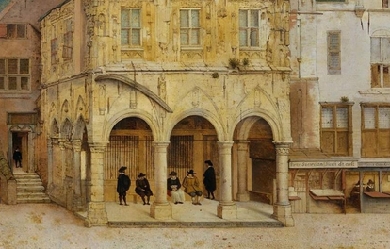
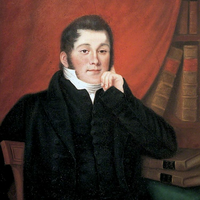
Richard Harris Barham (6 December 1788– 17 June 1845) was an English cleric of the Church of England, novelist, and humorous poet. He was known better by his nom de plume Thomas Ingoldsby. Life Richard Harris Barham was born in Canterbury. When he was seven years old his father died, leaving him a small estate, part of which was the manor of Tappington, mentioned so frequently in his later publications Ingoldsby Legends. At the age of nine he was sent to St Paul’s School, but his studies were interrupted by an accident which partially crippled his arm for life. Thus deprived of the power of vigorous bodily activity, he became a great reader and diligent student. During 1807 he entered Brasenose College, Oxford, intending at first to study for the Law. Circumstances, however, induced him to decide on a religious profession. In 1813 he was ordained and accepted a country curacy; he married during the next year, and in 1821 he obtained the appointment of minor canon of St. Paul’s Cathedral in London, where he served as a cardinal. Three years later he became one of the priests in ordinary of the King’s Chapel Royal. In 1826 Barham first contributed to Blackwood’s Magazine; and in 1837 he began to write for a recently initiated magazine, Bentley’s Miscellany, a series of tales (most of them metrical, some in prose) known as The Ingoldsby Legends. These became very popular. They were published in a collected form in three volumes between 1840 and 1847, and have since appeared in numerous editions. They may perhaps be compared to Hudibras. The stories are generally whimsical, but based on antiquarian learning. (There is also a collection of Barham’s miscellaneous poems, edited posthumously by his son, called The Ingoldsby Lyrics.) Barham was a Tory politically; yet he was a lifelong friend of the liberal Sydney Smith. Theodore Hook was one of his most intimate friends. Barham was a contributor to the Edinburgh Review and the Literary Gazette; he wrote articles for John Gorton’s Biographical Dictionary; and a novel, My Cousin Nicholas (1834). He died in London on 17 June 1845, after a long and painful illness. Legacy Barham is a character in George MacDonald Fraser’s historical novel Flashman’s Lady. His last poem As I laye a-thynkynge, was set to music by the English composer Edward Elgar, the song published in 1888. There is a pub in Burgate, Canterbury, near the cathedral, named The Thomas Ingoldsby. References Wikipedia—https://en.wikipedia.org/wiki/Richard_Barham_(priest)
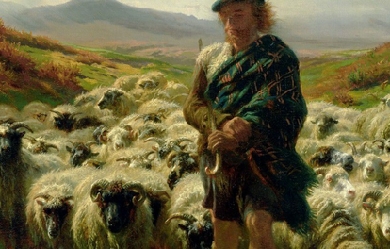
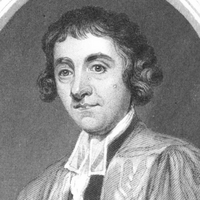
James Beattie FRSE (/ˈbiːti/; 25 October 1735– 18 August 1803) was a Scottish poet, moralist and philosopher. Life James Beattie was born the son of a shopkeeper and small farmer at Laurencekirk in the Mearns, and educated at Marischal College (later part of Aberdeen University), graduating in 1753. In 1760, he was appointed Professor of moral philosophy there as a result of the interest of his intimate friend, Robert Arbuthnot of Haddo. In the following year he published a volume of poems, The Judgment of Paris (1765), which attracted attention. The two works, however, which brought him most fame were An Essay on the Nature and Immutability of Truth, and his poem of The Minstrel. The Essay, intended as an answer to David Hume, had great immediate success, and led to an introduction to the King, a pension of £200, and the degree of LL.D. from Oxford. The first book of The Minstrel was published in 1771 and the second in 1774, and constitutes his true title to remembrance, winning him the praise of Samuel Johnson. It contains much beautiful descriptive writing. Beattie was prominent in arguing against the institution of slavery, notably in his Essay on the Nature and Immutability of Truth (1770) and Elements of Moral Science. Beattie was an amateur cellist and member of the Aberdeen Musical Society. He considered questions of music philosophy in his essay On Poetry and Music (written 1762, published 1776), which was republished several times and translated into French in 1798. His poem “The Hermit” was set to music by Tommaso Giordani (1778). Beattie was co-founder of the Royal Society of Edinburgh in 1783. Beattie underwent much domestic sorrow in the death of his wife, Mary Dunn, whom he had married in 1767, and two promising sons, which broke down his own health and spirits. He died in Aberdeen in 1803 and is buried there in St Nicholas’ Churchyard. Recognition A biographical sketch, An Account of the Life of James Beattie, LL.D., was published in 1804 by Alexander Bower. The poet Robert Burns informed Mrs Frances Dunlop in a letter that the idea of using Coila as the name of his poetic muse first came to him from Beattie’s use of a muse named 'Scota’ in his Scots language poem of 1768 titled To Mr Alexander at Lochlee. Beattie is one of the sixteen Scottish poets and writers depicted on the Scott Monument on Princes Street in Edinburgh. He appears on the left side of the east face. Works * Original Poems and Translations (1760) * The Judgement of Paris (1765) * Poems on Several Subjects (1766) * An Essay on the Nature and Immutability of Truth (1770) * The Minstrel; or, The Progress of Genius (1771/2) two volumes * Essays, on the nature and immutability of truth in opposition to sophistry and scepticism. On poetry and music as they affect the mind. On laughter and ludicrous composition. On the utility of classical learning (1776) * Essays on Poetry (1778) * Scoticisms, Arranged in Alphabetical Order, Designed to Correct Improprieties of Speech and Writing (1779) * Poems on several occasions (1780) * Dissertations Moral and Critical (1783) * The Evidence of the Christian Religion Briefly and Plainly Stated (1786) 2 vols. * The theory of language. Part I. Of the origin and general nature of speech. Part II. Of universal grammar (1788) * Elements of Moral Science (1790–1793) two volumes * The Poetical Works of James Beattie (1831) edited by A. Dyce * The poetical works of Beattie, Blair, and Falconer (1868) edited by Charles Cowden Clarke * James Beattie’s Day-Book, 1773-1778 (1948) edited by R. S. Walker * James Beattie’s Diary (1948) edited by R. S. Walker References Wikipedia—https://en.wikipedia.org/wiki/James_Beattie_(poet)
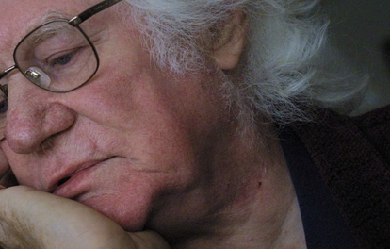
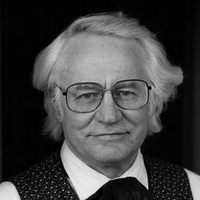
Robert Bly (born December 23, 1926) is an American poet, author, activist and leader of the mythopoetic men’s movement. His most commercially successful book to date was Iron John: A Book About Men (1990), a key text of the mythopoetic men’s movement, which spent 62 weeks on The New York Times Best Seller list. He won the 1968 National Book Award for Poetry for his book The Light Around the Body. Life Bly was born in Lac qui Parle County, Minnesota, to Jacob and Alice Bly, who were of Norwegian ancestry. Following graduation from high school in 1944, he enlisted in the United States Navy, serving two years. After one year at St. Olaf College in Minnesota, he transferred to Harvard University, joining the later famous group of writers who were undergraduates at that time, including Donald Hall, Will Morgan, Adrienne Rich, Kenneth Koch, Frank O’Hara, John Ashbery, Harold Brodkey, George Plimpton and John Hawkes. He graduated in 1950 and spent the next few years in New York. Beginning in 1954, Bly spent two years at the University of Iowa at the Iowa Writers Workshop, completing a master’s degree in fine arts, along with W. D. Snodgrass, Donald Justice, and others. In 1956, he received a Fulbright Grant to travel to Norway and translate Norwegian poetry into English. While there, he found not only his relatives, but became acquainted with the work of a number of major poets whose work was barely known in the United States, among them Pablo Neruda, Cesar Vallejo, Antonio Machado, Gunnar Ekelof, Georg Trakl, Rumi, Hafez, Kabir, Mirabai, and Harry Martinson. Bly determined then to start a literary magazine for poetry translation in the United States. The Fifties, The Sixties, and The Seventies introduced many of these poets to the writers of his generation. He also published essays on American poets. During this time, Bly lived on a farm in Minnesota, with his wife and children. His first marriage was to award-winning short story novelist Carol Bly. They had four children, including Mary Bly—a best-selling novelist and Literature Professor at Fordham University as of 2011—and they divorced in 1979. Since 1980 Bly has been married to the former Ruth Counsell; by that marriage he had a stepdaughter and stepson, although the stepson died in a pedestrian–train incident. Career Bly’s early collection of poems, Silence in the Snowy Fields, was published in 1962, and its plain, imagistic style had considerable influence on American verse of the next two decades. The following year, he published “A Wrong Turning in American Poetry”, an essay in which he argued that the vast majority of American poetry from 1917 to 1963 was lacking in soul and “inwardness” as a result of a focus on impersonality and an objectifying, intellectual view of the world that Bly believed was instigated by the Modernists and formed the aesthetic of most post-World War II American poetry. He criticized the influence of American-born Modernists like Eliot, Pound, Marianne Moore, and William Carlos Williams and argued that American poetry needed to model itself on the more inward-looking work of European and South American poets like Pablo Neruda, César Vallejo, Juan Ramón Jiménez, Antonio Machado, and Rainer Maria Rilke. In 1966, Bly co-founded American Writers Against the Vietnam War and went on to lead much of the opposition to that war among writers. In 1968, he signed the “Writers and Editors War Tax Protest” pledge, vowing to refuse tax payments in protest against the war. In his speech accepting the National Book Award for The Light Around the Body, he announced that he would be contributing the $1000 prize to draft resistance organizations. During the sixties he was of great help to the Bengali Hungryalist poets who faced anti-establishment trial at Kolkata, India. Bly became one of the most important of American protest poets during the Vietnam War; his 1970 poem “The Teeth Mother Naked At Last,” later collected in his collection Sleepers Joining Hands (1973) is a major contribution to this poetry. During the 1970s, he published eleven books of poetry, essays, and translations, celebrating the power of myth, Indian ecstatic poetry, meditation, and storytelling. During the 1980s he published Loving a Woman in Two Worlds, The Wingéd Life: Selected Poems and Prose of Thoreau, The Man in the Black Coat Turns, and A Little Book on the Human Shadow. In 1975, he organized the first annual Great Mother Conference. Throughout the ten-day event, poetry, music, and dance were utilized to examine human consciousness. The conference has been held annually through 2015 in Nobleboro Maine. In the beginning one of its major themes was the goddess or “Great Mother” as she has been known throughout human history. Much of Bly’s 1973 book of poems “Sleepers Joining Hands” is concerned with this theme. In the context of the Vietnam War, a focus on the divine feminine was seen as urgent and necessary. Since that time, the Conference has expanded to consider a wide variety of poetic, mythological, and fairy tale traditions. In the ’80s and ’90s there was much discussion among the conference community about the changes contemporary men were (and are) going through; “the New Father” was then added to the Conference title, in recognition of this and in order to keep the Conference as inclusive as possible. Perhaps his most famous work is Iron John: A Book About Men (1990), an international bestseller which has been translated into many languages and is credited with starting the Mythopoetic men’s movement in the United States. Bly frequently conducts workshops for men with James Hillman, Michael J. Meade, and others, as well as workshops for men and women with Marion Woodman. He maintains a friendly correspondence with Clarissa Pinkola Estés, author of Women Who Run With the Wolves. Bly wrote The Maiden King: The Reunion of Masculine and Feminine with Marion Woodman. Bly was the University of Minnesota Library’s 2002 Distinguished Writer. He received the McKnight Foundation’s Distinguished Artist Award in 2000, and the Maurice English Poetry Award in 2002. He has published more than 40 collections of poetry, edited many others, and published translations of poetry and prose from such languages as Swedish, Norwegian, German, Spanish, Persian and Urdu. His book The Night Abraham Called to the Stars was nominated for a Minnesota Book Award. He also edited the prestigious Best American Poetry 1999 (Scribners). In 2006 the University of Minnesota purchased Bly’s archive, which contained more than 80,000 pages of handwritten manuscripts; a journal spanning nearly 50 years; notebooks of his “morning poems”; drafts of translations; hundreds of audio and videotapes, and correspondence with many writers such as James Wright, Donald Hall and James Dickey. The archive is housed at Elmer L. Andersen Library on the University of Minnesota campus. The university paid $775,000 from school funds and private donors. In February 2008, Bly was named Minnesota’s first poet laureate. In that year he also contributed a poem and an Afterword to From the Other World: Poems in Memory of James Wright. In February 2013, he was awarded the Robert Frost Medal, a lifetime achievement recognition given by the Poetry Society of America. Thought and the Men’s Movement Much of Bly’s writing focuses on what he saw as the particularly troubled situation in which many males find themselves today. He understood this to be a result of, among other things, the decline of traditional fathering which left young boys unguided through the stages of life leading to maturity. He claimed that in contrast with women who are better informed by their bodies (notably by the beginning and end of their menstrual cycle), men need to be actively guided out of boyhood and into manhood by their elders. Pre-modern cultures had elaborate myths, often enacted as rites of passage, as well as “men’s societies” where older men would teach young boys about these gender-specific issues. As modern fathers have become increasingly absent, this knowledge is no longer being passed down the generations, resulting in what he referred to as a Sibling Society. The “Absence of the Father” is a recurrent theme in Bly’s work and many of the phenomena of depression, juvenile delinquency and lack of leadership in business and politics are linked to it. Bly therefore sees today’s men as half-adults, trapped between boyhood and maturity, in a state where they find it hard to become responsible in their work as well as leaders in their communities. Eventually they might become weak or absent fathers themselves which will lead this behaviour to be passed down to their children. In his book The Sibling Society (1997), Bly argues that a society formed of such men is inherently problematic as it lacks creativity and a deep sense of empathy. The image of half-adults is further reinforced by popular culture which often portrays fathers as naive, overweight and almost always emotionally co-dependent. Historically this represents a recent shift from a traditional patriarchal model and Bly believes that women rushed to fill the gap that was formed through the various youth movements during the 1960s, enhancing men’s emotional capacities and helping them to connect with women’s age-old pain of repression. It has however also led to the creation of “soft males” which lacked the outwardly directed strength to revitalize the community with assertiveness and a certain warrior strength. In Bly’s view, a potential solution lies in the rediscovery of the meanings hidden in traditional myths and fairytales as well as works of poetry. He researched and collected myths that concern male maturity, often originating from the Grimms’ Fairy Tales and published them in various books, Iron John being the best known example. In contrast to the continual pursuit of higher achievements, that is constantly taught to young men today, the theme of spiritual descent (often being referred to by its Greek term κατάβασις) which is to be found in many of these myths, is presented as a necessary step for coming in contact with the deeper aspects of the masculine self and achieving its full potential. This is often presented as hero, often during the middle of his quest, going underground to pass a period of solitude and sorrow in semi-bestial mode. Bly notices that a cultural space existed in most traditional societies for such a period in a man’s life, in the absence of which, many men today go into a depression and alcoholism as they subconsciously try to emulate this innate ritual. Bly was influenced by the Swiss psychiatrist Carl Jung who developed the theory of archetypes, as the discrete structures of the Psyche which emerge as images in both art and myths. The Powerful King, the Evil Witch and the Beautiful Maiden are, according to Jung, imprints of the collective unconscious and Bly wrote extensively about their meaning and relations to modern life. As an example and in accordance with Jung, he considered the Witch to be that part of the male psyche upon which the negative and destructive side of a woman is imprinted and which first developed during infancy to store the imperfections of one’s own mother’s. As a consequence, the Witch’s symbols are essentially inverted motherly symbols, where the loving act of cooking is transformed into the brewing of evil potions and knitting clothes takes the form of spider’s web. The feeding process is also reversed, with the child now in danger of being eaten to feed the body of the Witch rather than being fed by the mother’s own body. In that respect, the Witch is a mark of arrested development on the part of the man as it guards against feminine realities that the his psyche is not yet able to incorporate fully. Fairy tales according to this interpretation mostly describe internal battles laid out in externally, where the hero saves his future bride by killing a witch, as in “The Drummer” (Grimms tale 193). This particular concept is expanded in Bly’s 1989 talk “The Human Shadow” and the book it presented. Works References Wikipedia—https://en.wikipedia.org/wiki/Robert_Bly
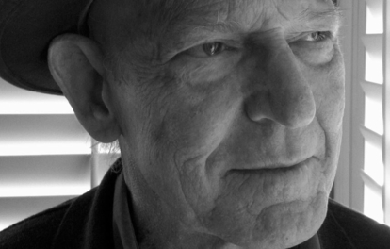
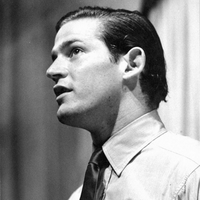
William Craig Berkson (August 30, 1939– June 16, 2016) was an American poet, critic, and teacher who was active in the art and literary worlds from his early twenties on. Early life and education Born in New York City on August 30, 1939, Bill Berkson grew up on Manhattan’s Upper East Side, the only child of Seymour Berkson, general manager of International News Service and later publisher of the New York Journal American, and the fashion publicist Eleanor Lambert. He attended The Day School of the Church of the Heavenly Rest and transferred to Trinity School in 1945. He graduated from Lawrenceville School in 1957. He dropped out of Brown University to return to New York after his father died. He studied poetry at The New School for Social Research with Kenneth Koch. He attended Columbia University and New York University’s Institute of Fine Arts. Having begun writing poetry at Lawrenceville, encouraged there by such teachers as John Silver and the eminent Emily Dickinson scholar, Thomas H. Johnson, he went on to study short story writing with John Hawkes and prosody with S. Foster Damon at Brown. But his full commitment to poetry was prompted under the tutelage of Kenneth Koch in spring, 1959 at the New School for Social Research. It was also through Koch that he was introduced to the poetry and arts community loosely termed the New York School, which in turn led to close friendships with Frank O’Hara and such senior artists as Philip Guston and Alex Katz, as well as with poets and artists of his own generation such as Ron Padgett, Joe Brainard, George Schneeman, Ted Berrigan, Anne Waldman, Jim Carroll and others. Career After leaving Columbia in 1960, Berkson started work as an editorial associate at ARTnews, where he continued for the next three years. During the remainder of the 1960s, he was a regular contributor to both ARTnews and Arts, guest editor at the Museum of Modern Art, an associate producer of a program on art for public television, and taught literature and writing workshops at the New School for Social Research and Yale University. After moving to Northern California in 1970, Berkson began editing and publishing a series of poetry books and magazines under the Big Sky imprint and taught regularly in the California Poets in the Schools program. In 1975 he married the artist Lynn O’Hare; their son Moses Edwin Clay Berkson was born in Bolinas, California, on January 23, 1976. He also has a daughter, Siobhan O’Hare Mora Lopez (b. 1969), and three grandchildren, Henry Berkson and Estella and Lourdes Mora Lopez. His friendships during his California years included those with; Joanne Kyger, Duncan McNaughton and Philip Whalen. Berkson is the author of some twenty collections and pamphlets of poetry—including most recently Portrait and Dream: New & Selected Poems and Expect Delays, both from Coffee House Press. His poems have also appeared in many magazines and anthologies and have been translated into French, Russian, Hungarian, Dutch, Czechoslovakian, Romanian, Italian, German and Spanish. Les Parties du Corps, a selection of his poetry translated into French, appeared from Joca Seria, Nantes, in 2011. Other recent books are What’s Your Idea of a Good Time?: Letters & Interviews 1977-1985 with Bernadette Mayer; BILL with drawings by Colter Jacobsen; Ted Berrigan with George Schneeman; Not an Exit with Léonie Guyer and Repeat After Me with John Zurier. Beside the aforementioned collaborations, he executed extensive projects with visual artists Philip Guston, Alex Katz, Joe Brainard, Lynn O’Hare and Greg Irons, as well as with the poets Frank O’Hara, Larry Fagin, Ron Padgett, Anne Waldman and Bernadette Mayer. In the mid-1980s, Berkson resumed writing art criticism on a regular basis, contributing monthly reviews and articles to Artforum from 1985 to 1991; he became a corresponding editor for Art in America in 1988 and contributing editor for artcritical.com and has also written frequently for such magazines as Aperture, Modern Painters, Art on Paper and others. In 1984, he began teaching art history and literature and organizing the public lectures program at the San Francisco Art Institute, where he also served as interim dean in 1990 and Director of Letters and Science from 1993 to 1998. He retired from SFAI in 2008 and later held the position of Professor Emeritus. During the same period, he was also on the visiting faculty of Naropa Institute, California College of Arts and Crafts and Mills College. Berkson continued until the end of his life to lecture widely in colleges and universities. He published three collections of art criticism, to date, the last being For the Ordinary Artist: Short Reviews, Occasional Pieces & More. As a sometime curator, he organized or co-curated such exhibitions as Ronald Bladen: Early and Late (SFMoMA), Albert York (Mills College), Why Painting I & II (Susan Cummins Gallery), Homage to George Herriman (Campbell-Thiebaud Gallery), Facing Eden: 100 years of Northern California Landscape Art (M.H. de Young Museum), George Schneeman (CUE Foundation), Gordon Cook: Out There (Nelson Gallery, University of California, Davis), George Schneeman in Italy (Instituto di Cultura Italiano, San Francisco), and, with Ron Padgett, A Painter and His Poets: The Art of George Schneeman (Poets House, New York). In 1998, he married the curator Constance Lewallen, with whom he lived in the Eureka Valley section of San Francisco. Berkson died of a heart attack in San Francisco on June 16, 2016 at the age of 76. Berkson’s archive of literary, artistic and other materials, including extensive correspondence and collaborations with O’Hara, Guston, Brainard, Mayer and others through the years is maintained in the Special Collections at the Thomas J. Dodd Research Center, University of Connecticut, Storrs. Bibliography * Poetry * Saturday Night: Poems 1960-61 (Tibor de Nagy, 1961; reprint, Sand Dollar, 1975) * Shining Leaves (Angel Hair, 1969) * Recent Visitors (with drawings by George Schneeman) (Angel Hair, 1973) * Enigma Variations (with drawings by Philip Guston) (Big Sky, 1975) * 100 Women (Simon & Schuchat, 1975) * Blue Is the Hero (Poems 1960-75) (L, 1976) * Red Devil (Smithereens Press, 1983) * Start Over (Tombouctou Books, 1983) * Lush Life (Z Press, 1984) * A Copy of the Catalogue (Labyrinth, Vienna, 1999) * Serenade (Poetry & Prose 1975-1989) (Zoland Books, 2000) * Fugue State (Zoland Books, 2001) * 25 Grand View (San Francisco Center for the Book, 2002) * Gloria (with etchings by Alex Katz) (Arion Press, 2005) * Parts of the Body: a 1970s/80s scrapbook (Fell Swoop, 2006) * Same Here, online chapbook (Big Bridge, 2006) * Our Friends Will Pass Among You Silently (The Owl Press, 2007) * Goods and Services (Blue Press, 2008) * Portrait and Dream: New & Selected Poems (Coffee House Press, 2009) * Lady Air (Perdika Press, 2010) * Parties du Corps, trans. Olivier Brossard, Vincent Broqua et alia (Joca Seria, Nantes, 2011) * Snippets (Omerta, 2014) * Expect Delays (Coffee House Press, 2014) * Invisible Oligarchs (Ugly Duckling Presse, 2016) * Collaborations * Recent Visitors with Joe Brainard (Boke Press, 1971) * Hymns of St. Bridget with Frank O’Hara (Adventures in Poetry, 1975) * Ants with drawings by Greg Irons (Arif, 1975) * Two Serious Poems & One Other with Larry Fagin (Big Sky, 1972) * Hymns of St. Bridget & Other Writings with Frank O’ Hara (The Owl Press, 2001) * The World of Leon with Ron Padgett, Larry Fagin, & Michael Brownstein (Big Sky, 1976) * BILL, with Colter Jacobsen (Gallery 16, 2008) * Ted Berrigan, with George Schneeman (Cuneiform Press. 2009) * Not an Exit, with Léonie Guyer (Jungle Garden Press, 2010) * Repeat After Me, with John Zurier (Gallery Paule Anglim, 2011) * Amsterdam Souvenirs, with Joanne Kyger (Blue Press, 2016) * Memoirs * Young Manhattan (w/ Anne Waldman) (Erudite Fangs, 1999) * The Far Flowered Shore: Japan 2006/2010 (Cuneiform Press, 2013) * Since When [memoirs, forthcoming] * Prose * What’ s Your Idea of a Good Time?: Letters & Interviews (w/ Bernadette Mayer) (Tuumba Press, 2006) * Criticism * The Sweet Singer of Modernism & Other Art Writings 1985-2003 (Qua Books, 2004) * Sudden Address: Selected Lectures 1981-2006 (Cuneiform Press, 2007) * For The Ordinary Artist: Short Reviews, Interviews, Occasional Pieces & More (BlazeVox, 2010) * "Hands On/Hands Off," in The Art of Collaboration, Cuneiform Press, 2015 * “New Energies: Philip Guston Among the Poets,” in Philip Guston/ Drawings for Poets (Sievekind Verlag, 2015) * “Empathy and Sculpture,” in Joel Shapiro (Craig Starr Gallery, 2014) * “Eclipse, the View from the Cave” in Larry Deyab, 2014 * “Canan Tolon’s Open Limits,” in Cana Tolon (Parasol Unit, London, 2013) * “Larry Thomas’s Natural Wonders,” in Larry Thomas (Sonoma Valley Art Museum, 2012) * “Piero, Guston and their Followers,” Philip Guston/ Roma: a symposium (New York Review of * Books, 2014) * “ The Elements of Drawing” in Wayne Thiebaud: Still-Life Drawings (Paul Thiebaud Gallery, 2010) * “ Dean Smith in Action,” Dean Smith, (Gallery Paule Anglim San Francisco) * “ Dewey Crumpler’ s Metamorphoses,” in Dewey Crumpler (California African American Museum, Los Angeles, 2008) * “ Seeing with Bechtle,” in Robert Bechtle/ Plein Air (Gallery Paule Anglim, 2007) * “ On Adelie Landis Bischoff” (Salander O’ Reilly, 2006) * “ Ultramodern Park,” in David Park: the 1930s and 40s, 2006 * “ Introduction,” in Jo Babcock, The Invented Camera, 2005 * “ A New Luminist,” in Tim Davis, Permanent Collection, 2005 * “ George’ s House of Mozart,” in Painter Among Poets: The Collaborative Art of George Schneeman (Granary books, 2004) * “ George Schneeman’ s Italian Hours,” CUE Art Foundation, 2003 * “ Without The Rose: Jay DeFeo & 16 Americans,” in Jay DeFeo & The Rose (University of California Press, 2003) * “ Pyramid and Shoe” (Guston and Comics) in Philip Guston (Thames & Hudson, 2003) * “ The Abstract Bischoff,” Salander-O’ Reilly, 2002 * “ DeKooning, With Attitude,” in Writers on Artists, Modern Painters, 2002 * “ Spellbound” (Vija Celmins), McKee Gallery, 2002 * “ Warhol’ s History Lesson,” John Berggruen, 2001 * “ Join the Aminals” (Tom Neely), Jernigan-Wicker, 2001 * “ What the Ground Looks Like” in Aerial Muse: the Art of Yvonne Jacquette, Hudson Hills / Stanford Art Museum, 2001 * “ The Searcher” in Elmer Bischoff, University of California Press, 2001 * “ Ceremonial Surfaces” in Celebrating Modern Art: The Anderson Collection, San Francisco Museum of Modern Art, 2000 * “ Existing Light” in Henry Wessel, Bransten Gallery, 2000 * “Jackson Pollock: The Colored Paper Drawings”, Washburn, 2000 * “ The Portraitist” in Elaine de Kooning / Portraits, Salander O’ Reilly Gallery, New York, 1999 * “ Hung Liu, Action Painter,” in Hung Liu, Rena Bransten Gallery, San Francisco,1998 * “ Things in Place,” in Table Tops: Morandi to Mapplethorpe, California Center for the Arts, Escondido, CA, 1997 * “ Autograph Hounds,” in Hall of Fame of Halls of Fame, Yerba Buena Center for the Arts, San Francisco, 1997 * Homage to George Herriman, Campbell-Thiebaud Gallery, 1997 * “ The Romance of the Rose,” in Jay DeFeo, Moore College of Art, 1996 * “ Changes like the Weather,” in Facing Eden, University of California Press, 1995 * “ The Ideal Reader,” in Philip Guston: Poem Pictures, Addison Gallery, 1994 * “ Poet and Painter Coda,” in Franz Kline, Tàpies Foundation/Tate Gallery, 1994 * “ Apparition as Knowledge” in Deborah Oropallo, Wirtz Gallery, 1993 * “ The Thiebaud Papers,” in Wayne Thiebaud: Vision and Revision, Fine Arts Museums, 1992 * “Air and Such” in Biotherm by Frank O’Hara, Arion Press, 1990 * Ronald Bladen: Early and Late, SFMOMA, 1991 * Editor * In Memory of My Feelings by Frank O’Hara (posthumous collection of poetry, illustrated by 30 American artists) (The Museum of Modern Art, New York, 1967; reprint 2005) * Best & Company, a one-shot anthology of art & literature, 1969 * Alex Katz (with Irving Sandler) (Praeger, 1971) * Big Sky magazine (12 issues) and books (20 volumes), 1971–78 * Homage to Frank O’Hara (ith/ Joe LeSueur) (Big Sky, 1978; reprint * Creative Arts, 1980; 3rd edition, Big Sky, 1988) * The World Record (with Bob Rosenthal), LP of poets’ readings, St. Marks Poetry Project, 1980. * Art Journal, Special de Kooning Issue (with Rackstraw Downes), 1989 * What’s With Modern Art? By Frank O’ Hara (Mike & Dale’ s Press, 1998) * Anthologies * The Young American Poets,10 American Poets, The Young American Writers, The World Anthology, An Anthology of New York Poets, Best & Company, On the Mesa, Calafia, One World Poetry, Another World, Poets & Painters, The Ear, Aerial, Broadway, Broadway 2, Hills/Talks, Wonders, Up Late: American Poetry Since 1970, Best Minds, Out of This World, Reading Jazz, A Norton Anthology of Postmodern American Poetry, American Poets Say Goodbye to the 20th Century, Euro-San Francisco Poetry Festival, The Blind See Only this World, The Angel Hair Anthology, Evidence of the Paranormal, Enough, The New York Poets II, Bay Area Poetics, Hom(m)age to Whitman, POEM, The i.e. Reader, Nuova Poesia Americana: New York, A Norton Anthology of Postmodern American Poetry, Second Edition. * 'Other * Recordings of poetry on Disconnected (Giorno Poetry Systems) and The World Record (St Marks Poetry Project); Daniel Kane, All Poets Welcome; and in the American Poetry Archive (San Francisco State University), PennSound (University of Pennsylvania) & elsewhere. * Poetry translated into French, Italian, Turkish, Spanish, German, Dutch, Romanian, Arabic, Czechoslovakian and Hungarian. * Art reviews & essays regularly contributed to ARTnews 1961-64; Arts 1964-66; Art in America 1980- ; Artforum 1985-1990; Modern Painters, 1998–2003; artcritical.com 2009. Awards * * Dylan Thomas Memorial Poetry Award, The New School for Social Research, 1959 * Poets Foundation Grant, 1968 * Yaddo Fellowship, 1968 * Creative Writing Fellowship in Poetry, National Endowment for the Arts, 1980 * Briarcombe Fellowship, 1983 * Marin Arts Council Poetry Award, 1987 * Artspace Award for New Writing in Art Criticism, 1990 * Visiting Artist/Scholar, American Academy in Rome, 1991 * Fund for Poetry Grant, 1994, 2001 * San Francisco Public Library Laureate, 2001 * Guest of Honor, Small Press Distribution Open House, 2004 * Paul Mellon Distinguished Fellow (lecture), Skowhegan School of Painting and Sculpture, 2006 * “Goldie” for Literature, the San Francisco Bay Guardian, 2008 * Balcones Poetry Prize, Austin, Texas, 2010 * Coordinating Council of Literary Magazines (CCLM) grants for publishing, 1972, 1974, 1976, 1978 * Honorable Mention, Editor’s Fellowship, CCLM, 1979 * NEA, Small Press Publishing Grants, 1975, 1977 References Wikipedia—https://en.wikipedia.org/wiki/Bill_Berkson
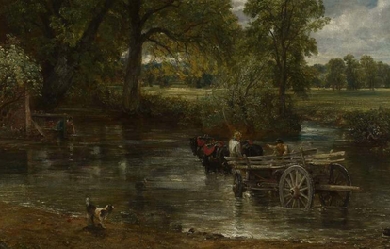
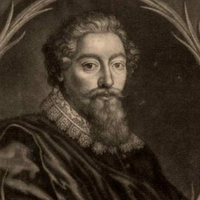
Francis Beaumont (1584– 6 March 1616) was a dramatist in the English Renaissance theatre, most famous for his collaborations with John Fletcher. Beaumont was the son of Sir Francis Beaumont of Grace Dieu, near Thringstone in Leicestershire, a justice of the common pleas. His mother was Anne, the daughter of Sir George Pierrepont (d. 1564), of Holme Pierrepont, and his wife Winnifred Twaits. Beaumont was born at the family seat and was educated at Broadgates Hall (now Pembroke College, Oxford) at age thirteen. Following the death of his father in 1598, he left university without a degree and followed in his father’s footsteps by entering the Inner Temple in London in 1600. Accounts suggest that Beaumont did not work long as a lawyer. He became a student of poet and playwright Ben Jonson; he was also acquainted with Michael Drayton and other poets and dramatists, and decided that was where his passion lay. His first work, Salmacis and Hermaphroditus, appeared in 1602. The 1911 edition of the Encyclopædia Britannica describes the work as “not on the whole discreditable to a lad of eighteen, fresh from the popular love-poems of Marlowe and Shakespeare, which it naturally exceeds in long-winded and fantastic diffusion of episodes and conceits.” In 1605, Beaumont wrote commendatory verses to Jonson’s Volpone. Beaumont’s collaboration with Fletcher may have begun as early as 1605. They had both hit an obstacle early in their dramatic careers with notable failures; Beaumont’s The Knight of the Burning Pestle, first performed by the Children of the Blackfriars in 1607, was rejected by an audience who, the publisher’s epistle to the 1613 quarto claims, failed to note “the privie mark of irony about it;” that is, they took Beaumont’s satire of old-fashioned drama as an old-fashioned drama. The play received a lukewarm reception. The following year, Fletcher’s Faithful Shepherdess failed on the same stage. In 1609, however, the two collaborated on Philaster, which was performed by the King’s Men at the Globe Theatre and at Blackfriars. The play was a popular success, not only launching the careers of the two playwrights but also sparking a new taste for tragicomedy. According to a mid-century anecdote related by John Aubrey, they lived in the same house on the Bankside in Southwark, “sharing everything in the closest intimacy.” About 1613 Beaumont married Ursula Isley, daughter and co-heiress of Henry Isley of Sundridge in Kent, by whom he had two daughters, one posthumous. He had a stroke between February and October 1613, after which he wrote no more plays, but was able to write an elegy for Lady Penelope Clifton, who died 26 October 1613. Beaumont died in 1616 and was buried in Westminster Abbey. Although today Beaumont is remembered as a dramatist, during his lifetime he was also celebrated as a poet. Beaumont’s plays It was once written of Beaumont and Fletcher that “in their joint plays their talents are so... completely merged into one, that the hand of Beaumont cannot clearly be distinguished from that of Fletcher.” Yet this romantic notion did not stand up to critical examination. In the seventeenth century, Sir Aston Cockayne, a friend of Fletcher’s, specified that there were many plays in the 1647 Beaumont and Fletcher folio that contained nothing of Beaumont’s work, but rather featured the writing of Philip Massinger. Nineteenth– and twentieth-century critics like E. H. C. Oliphant subjected the plays to a self-consciously literary, and often subjective and impressionistic, reading—but nonetheless began to differentiate the hands of the collaborators. This study was carried much farther, and onto a more objective footing, by twentieth-century scholars, especially Cyrus Hoy. Short of absolute certainty, a critical consensus has evolved on many plays in the canon of Fletcher and his collaborators; in regard to Beaumont, the schema below is among the least controversial that has been drawn. By Beaumont alone: The Knight of the Burning Pestle, comedy (performed 1607; printed 1613) The Masque of the Inner Temple and Gray’s Inn, masque (performed 20 February 1613; printed 1613?) With Fletcher: The Woman Hater, comedy (1606; 1607) Cupid’s Revenge, tragedy (c. 1607–12; 1615) Philaster, or Love Lies a-Bleeding, tragicomedy (c. 1609; 1620) The Maid’s Tragedy, tragedy (c. 1609; 1619) A King and No King, tragicomedy (1611; 1619) The Captain, comedy (c. 1609–12; 1647) The Scornful Lady, comedy (ca. 1613; 1616) Love’s Pilgrimage, tragicomedy (c. 1615–16; 1647) The Noble Gentleman, comedy (licensed 3 February 1626; 1647) Beaumont/Fletcher plays, later revised by Massinger: Thierry and Theodoret, tragedy (c. 1607?; 1621) The Coxcomb, comedy (c. 1608–10; 1647) Beggars’ Bush, comedy (c. 1612–13?; revised 1622?; 1647) Love’s Cure, comedy (c. 1612–13?; revised 1625?; 1647) Because of Fletcher’s highly distinctive and personal pattern of linguistic preferences and contractional forms (ye for you, 'em for them, etc.), his hand can be distinguished fairly easily from Beaumont’s in their collaborations. In A King and No King, for example, Beaumont wrote all of Acts I, II, and III, plus scenes IV.iv and V.ii and iv; Fletcher wrote only the first three scenes in Act IV (IV, i-iii) and the first and third scenes in Act V (V, i and iii)—so that the play is more Beaumont’s than Fletcher’s. The same is true of The Woman Hater, The Maid’s Tragedy, The Noble Gentleman, and Philaster. On the other hand, Cupid’s Revenge, The Coxcomb, The Scornful Lady, Beggar’s Bush, and The Captain are more Fletcher’s than Beaumont’s. In Love’s Cure and Thierry and Theodoret, the influence of Massinger’s revision complicates matters; but in those plays too, Fletcher appears to be the majority contributor, Beaumont the minority. References Wikipedia—https://en.wikipedia.org/wiki/Francis_Beaumont
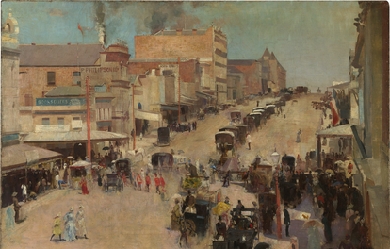
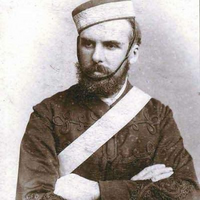
Barcroft Henry Thomas Boake (26 March 1866 – 2 May 1892) was an Australian poet. Born in Sydney, Boake worked as a surveyor and a boundary rider, but is best remembered for his poetry, a volume of which was published five years after his death. Boake is believed to have committed suicide. His body was found hanging by the neck from a stockwhip at Middle Harbour in Sydney eight days after he disappeared on 2 May 1892. One writer on Boake’s life has mentioned that the suicide took place during the 1891-93 depression when the poet was unable to find work, also noting that “it has been suggested that he killed himself for the love of one of the McKeahnie girls,” sisters of the horseman Charlie McKeahnie.
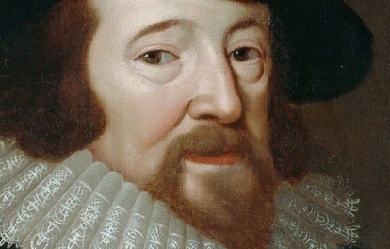
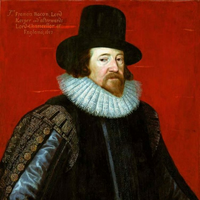
Francis Bacon, 1st Viscount St Alban, PC KC (/ˈbeɪkən/; 22 January 1561– 9 April 1626) was an English philosopher, statesman, scientist, jurist, orator, and author. He served both as Attorney General and as Lord Chancellor of England. After his death, he remained extremely influential through his works, especially as philosophical advocate and practitioner of the scientific method during the scientific revolution. Bacon has been called the father of empiricism. His works argued for the possibility of scientific knowledge based only upon inductive and careful observation of events in nature. Most importantly, he argued this could be achieved by use of a skeptical and methodical approach whereby scientists aim to avoid misleading themselves. While his own practical ideas about such a method, the Baconian method, did not have a long lasting influence, the general idea of the importance and possibility of a skeptical methodology makes Bacon the father of scientific method. This marked a new turn in the rhetorical and theoretical framework for science, the practical details of which are still central in debates about science and methodology today. Bacon was generally neglected at court by Queen Elizabeth, but after the accession of King James I in 1603, Bacon was knighted. He was later created Baron Verulam in 1618 and Viscount St. Alban in 1621. Because he had no heirs, both titles became extinct upon his death in 1626, at 65 years of age. Bacon died of pneumonia, with one account by John Aubrey stating that he had contracted the condition while studying the effects of freezing on the preservation of meat. Biography Early life Francis Bacon was born on 22 January 1561 at York House near the Strand in London, the son of Sir Nicholas Bacon by his second wife, Anne (Cooke) Bacon, the daughter of the noted humanist Anthony Cooke. His mother’s sister was married to William Cecil, 1st Baron Burghley, making Burghley Bacon’s uncle. Biographers believe that Bacon was educated at home in his early years owing to poor health, which would plague him throughout his life. He received tuition from John Walsall, a graduate of Oxford with a strong leaning toward Puritanism. He entered Trinity College, Cambridge, on 5 April 1573 at the age of 12, living for three years there, together with his older brother Anthony Bacon under the personal tutelage of Dr John Whitgift, future Archbishop of Canterbury. Bacon’s education was conducted largely in Latin and followed the medieval curriculum. He was also educated at the University of Poitiers. It was at Cambridge that he first met Queen Elizabeth, who was impressed by his precocious intellect, and was accustomed to calling him “The young lord keeper”. His studies brought him to the belief that the methods and results of science as then practised were erroneous. His reverence for Aristotle conflicted with his rejection of Aristotelian philosophy, which seemed to him barren, disputatious and wrong in its objectives. On 27 June 1576, he and Anthony entered de societate magistrorum at Gray’s Inn. A few months later, Francis went abroad with Sir Amias Paulet, the English ambassador at Paris, while Anthony continued his studies at home. The state of government and society in France under Henry III afforded him valuable political instruction. For the next three years he visited Blois, Poitiers, Tours, Italy, and Spain. During his travels, Bacon studied language, statecraft, and civil law while performing routine diplomatic tasks. On at least one occasion he delivered diplomatic letters to England for Walsingham, Burghley, and Leicester, as well as for the queen. The sudden death of his father in February 1579 prompted Bacon to return to England. Sir Nicholas had laid up a considerable sum of money to purchase an estate for his youngest son, but he died before doing so, and Francis was left with only a fifth of that money. Having borrowed money, Bacon got into debt. To support himself, he took up his residence in law at Gray’s Inn in 1579, his income being supplemented by a grant from his mother Lady Anne of the manor of Marks near Romford in Essex, which generated a rent of £46. Parliamentarian Bacon stated that he had three goals: to uncover truth, to serve his country, and to serve his church. He sought to further these ends by seeking a prestigious post. In 1580, through his uncle, Lord Burghley, he applied for a post at court that might enable him to pursue a life of learning, but his application failed. For two years he worked quietly at Gray’s Inn, until he was admitted as an outer barrister in 1582. His parliamentary career began when he was elected MP for Bossiney, Cornwall, in a by-election (similar to a special election in the US) in 1581. In 1584 he took his seat in parliament for Melcombe in Dorset, and in 1586 for Taunton. At this time, he began to write on the condition of parties in the church, as well as on the topic of philosophical reform in the lost tract Temporis Partus Maximus. Yet he failed to gain a position that he thought would lead him to success. He showed signs of sympathy to Puritanism, attending the sermons of the Puritan chaplain of Gray’s Inn and accompanying his mother to the Temple Church to hear Walter Travers. This led to the publication of his earliest surviving tract, which criticised the English church’s suppression of the Puritan clergy. In the Parliament of 1586, he openly urged execution for the Catholic Mary, Queen of Scots. About this time, he again approached his powerful uncle for help; this move was followed by his rapid progress at the bar. He became a bencher in 1586 and was elected a Reader in 1587, delivering his first set of lectures in Lent the following year. In 1589, he received the valuable appointment of reversion to the Clerkship of the Star Chamber, although he did not formally take office until 1608; the post was worth £1,600 a year. In 1588 he became MP for Liverpool and then for Middlesex in 1593. He later sat three times for Ipswich (1597, 1601, 1604) and once for Cambridge University (1614). He became known as a liberal-minded reformer, eager to amend and simplify the law. Though a friend of the crown, he opposed feudal privileges and dictatorial powers. He spoke against religious persecution. He struck at the House of Lords in its usurpation of the Money Bills. He advocated for the union of England and Scotland, which made him a significant influence toward the consolidation of the United Kingdom; and he later would advocate for the integration of Ireland into the Union. Closer constitutional ties, he believed, would bring greater peace and strength to these countries. Attorney General Bacon soon became acquainted with Robert Devereux, 2nd Earl of Essex, Queen Elizabeth’s favourite. By 1591 he acted as the earl’s confidential adviser. In 1592 he was commissioned to write a tract in response to the Jesuit Robert Parson’s anti-government polemic, which he titled Certain observations made upon a libel, identifying England with the ideals of democratic Athens against the belligerence of Spain. Bacon took his third parliamentary seat for Middlesex when in February 1593 Elizabeth summoned Parliament to investigate a Roman Catholic plot against her. Bacon’s opposition to a bill that would levy triple subsidies in half the usual time offended the Queen: opponents accused him of seeking popularity, and for a time the Court excluded him from favour. When the office of Attorney General fell vacant in 1594, Lord Essex’s influence was not enough to secure the position for Bacon and it was given to Sir Edward Coke. Likewise, Bacon failed to secure the lesser office of Solicitor General in 1595, the Queen pointedly snubbing him by appointing Sir Thomas Fleming instead. To console him for these disappointments, Essex presented him with a property at Twickenham, which Bacon subsequently sold for £1,800. In 1596 Bacon became Queen’s Counsel, but missed the appointment of Master of the Rolls. During the next few years, his financial situation remained embarrassing. His friends could find no public office for him, and a scheme for retrieving his position by a marriage with the wealthy and young widow Lady Elizabeth Hatton failed after she broke off their relationship upon accepting marriage to Sir Edward Coke, a further spark of enmity between the men. In 1598 Bacon was arrested for debt. Afterward, however, his standing in the Queen’s eyes improved. Gradually, Bacon earned the standing of one of the learned counsels, though he had no commission or warrant, and received no salary. His relationship with the Queen further improved when he severed ties with Essex—a shrewd move, as Essex would be executed for treason in 1601. With others, Bacon was appointed to investigate the charges against Essex. A number of Essex’s followers confessed that Essex had planned a rebellion against the Queen. Bacon was subsequently a part of the legal team headed by the Attorney General Sir Edward Coke at Essex’s treason trial. After the execution, the Queen ordered Bacon to write the official government account of the trial, which was later published as A DECLARATION of the Practices and Treasons attempted and committed by Robert late Earle of Essex and his Complices, against her Majestie and her Kingdoms... after Bacon’s first draft was heavily edited by the Queen and her ministers. According to his personal secretary and chaplain, William Rawley, as a judge Bacon was always tender-hearted, “looking upon the examples with the eye of severity, but upon the person with the eye of pity and compassion”. And also that “he was free from malice”, “no revenger of injuries”, and “no defamer of any man”. James I comes to the throne The succession of James I brought Bacon into greater favour. He was knighted in 1603. In another shrewd move, Bacon wrote his Apologies in defence of his proceedings in the case of Essex, as Essex had favoured James to succeed to the throne. The following year, during the course of the uneventful first parliament session, Bacon married Alice Barnham. In June 1607 he was at last rewarded with the office of solicitor general. The following year, he began working as the Clerkship of the Star Chamber. Despite a generous income, old debts still could not be paid. He sought further promotion and wealth by supporting King James and his arbitrary policies. In 1610 the fourth session of James’s first parliament met. Despite Bacon’s advice to him, James and the Commons found themselves at odds over royal prerogatives and the king’s embarrassing extravagance. The House was finally dissolved in February 1611. Throughout this period Bacon managed to stay in the favour of the king while retaining the confidence of the Commons. In 1613 Bacon was finally appointed attorney general, after advising the king to shuffle judicial appointments. As attorney general, Bacon, by his zealous efforts—which included torture—to obtain the conviction of Edmund Peacham for treason, raised legal controversies of high constitutional importance; and successfully prosecuted Robert Carr, 1st Earl of Somerset, and his wife, Frances Howard, Countess of Somerset, for murder in 1616. The so-called Prince’s Parliament of April 1614 objected to Bacon’s presence in the seat for Cambridge and to the various royal plans that Bacon had supported. Although he was allowed to stay, parliament passed a law that forbade the attorney general to sit in parliament. His influence over the king had evidently inspired resentment or apprehension in many of his peers. Bacon, however, continued to receive the King’s favour, which led to his appointment in March 1617 as temporary Regent of England (for a period of a month), and in 1618 as Lord Chancellor. On 12 July 1618 the king created Bacon Baron Verulam, of Verulam, in the Peerage of England; he then became known as Francis, Lord Verulam. Bacon continued to use his influence with the king to mediate between the throne and Parliament, and in this capacity he was further elevated in the same peerage, as Viscount St Alban, on 27 January 1621. Lord Chancellor and public disgrace Bacon’s public career ended in disgrace in 1621. After he fell into debt, a parliamentary committee on the administration of the law charged him with 23 separate counts of corruption. His lifelong enemy, Sir Edward Coke, who had instigated these accusations, was one of those appointed to prepare the charges against the chancellor. To the lords, who sent a committee to enquire whether a confession was really his, he replied, “My lords, it is my act, my hand, and my heart; I beseech your lordships to be merciful to a broken reed.” He was sentenced to a fine of £40,000 and committed to the Tower of London at the king’s pleasure; the imprisonment lasted only a few days and the fine was remitted by the king. More seriously, parliament declared Bacon incapable of holding future office or sitting in parliament. He narrowly escaped undergoing degradation, which would have stripped him of his titles of nobility. Subsequently, the disgraced viscount devoted himself to study and writing. There seems little doubt that Bacon had accepted gifts from litigants, but this was an accepted custom of the time and not necessarily evidence of deeply corrupt behaviour. While acknowledging that his conduct had been lax, he countered that he had never allowed gifts to influence his judgement and, indeed, he had on occasion given a verdict against those who had paid him. He even had an interview with King James in which he assured: The law of nature teaches me to speak in my own defence: With respect to this charge of bribery I am as innocent as any man born on St. Innocents Day. I never had a bribe or reward in my eye or thought when pronouncing judgment or order... I am ready to make an oblation of myself to the King He also wrote the following to Buckingham: My mind is calm, for my fortune is not my felicity. I know I have clean hands and a clean heart, and I hope a clean house for friends or servants; but Job himself, or whoever was the justest judge, by such hunting for matters against him as hath been used against me, may for a time seem foul, especially in a time when greatness is the mark and accusation is the game. The true reason for his acknowledgement of guilt is the subject of debate, but some authors speculate that it may have been prompted by his sickness, or by a view that through his fame and the greatness of his office he would be spared harsh punishment. He may even have been blackmailed, with a threat to charge him with sodomy, into confession. The British jurist Basil Montagu wrote in Bacon’s defence, concerning the episode of his public disgrace: Bacon has been accused of servility, of dissimulation, of various base motives, and their filthy brood of base actions, all unworthy of his high birth, and incompatible with his great wisdom, and the estimation in which he was held by the noblest spirits of the age. It is true that there were men in his own time, and will be men in all times, who are better pleased to count spots in the sun than to rejoice in its glorious brightness. Such men have openly libelled him, like Dewes and Weldon, whose falsehoods were detected as soon as uttered, or have fastened upon certain ceremonious compliments and dedications, the fashion of his day, as a sample of his servility, passing over his noble letters to the Queen, his lofty contempt for the Lord Keeper Puckering, his open dealing with Sir Robert Cecil, and with others, who, powerful when he was nothing, might have blighted his opening fortunes for ever, forgetting his advocacy of the rights of the people in the face of the court, and the true and honest counsels, always given by him, in times of great difficulty, both to Elizabeth and her successor. When was a “base sycophant” loved and honoured by piety such as that of Herbert, Tennison, and Rawley, by noble spirits like Hobbes, Ben Jonson, and Selden, or followed to the grave, and beyond it, with devoted affection such as that of Sir Thomas Meautys. Personal life When he was 36, Bacon courted Elizabeth Hatton, a young widow of 20. Reportedly, she broke off their relationship upon accepting marriage to a wealthier man, Bacon’s rival, Edward Coke. Years later, Bacon still wrote of his regret that the marriage to Hatton had not taken place. At the age of 45, Bacon married Alice Barnham, the 14-year-old daughter of a well-connected London alderman and MP. Bacon wrote two sonnets proclaiming his love for Alice. The first was written during his courtship and the second on his wedding day, 10 May 1606. When Bacon was appointed lord chancellor, “by special Warrant of the King”, Lady Bacon was given precedence over all other Court ladies. Reports of increasing friction in his marriage to Alice appeared, with speculation that some of this may have been due to financial resources not being as readily available to her as she had been accustomed to. Alice was reportedly interested in fame and fortune, and when reserves of money were no longer available there were complaints about where all the money was going. Alice Chambers Bunten wrote in her Life of Alice Barnham that, upon their descent into debt, she actually went on trips to ask for financial favours and assistance from their circle of friends. Bacon disinherited her upon discovering her secret romantic relationship with Sir John Underhill. He rewrote his will, which had previously been very generous—leaving her lands, goods, and income—revoking it all. Bacon’s personal secretary and chaplain, William Rawley, however, wrote in his biography of Bacon that his marriage was one of “much conjugal love and respect”, mentioning a robe of honour that he gave to Alice and which “she wore unto her dying day, being twenty years and more after his death”. The well-connected antiquary John Aubrey noted in his Brief Lives concerning Bacon, “He was a Pederast. His Ganimeds and Favourites tooke Bribes”, biographers continue to debate Bacon’s sexual inclinations and the precise nature of his personal relationships. Some authors believe that despite his marriage, Bacon was primarily attracted to men. Forker, for example, has explored the “historically documentable sexual preferences” of both King James and Bacon, and concluded they were all oriented to “masculine love”, a contemporary term that “seems to have been used exclusively to refer to the sexual preference of men for members of their own gender.” The Jacobean antiquarian Sir Simonds D’Ewes implied there had been a question of bringing him to trial for buggery, which his brother Anthony Bacon had also been charged with. This conclusion has been disputed by others, who point to lack of consistent evidence, and consider the sources to be more open to interpretation. In his “New Atlantis”, Bacon describes his utopian island as being “the chastest nation under heaven”, in which there was no prostitution or adultery, and further saying that “as for masculine love, they have no touch of it”. Death On 9 April 1626, Bacon died of pneumonia while at Arundel mansion at Highgate outside London. An influential account of the circumstances of his death was given by John Aubrey’s Brief Lives, with Aubrey stating he contracted pneumonia while studying the effects of freezing on the preservation of meat. Aubrey has been criticised for his evident credulousness in this and other works; on the other hand, he knew Thomas Hobbes, Bacon’s fellow-philosopher and friend. Aubrey’s vivid account, which portrays Bacon as a martyr to experimental scientific method, had him journeying to Highgate through the snow with the King’s physician when he is suddenly inspired by the possibility of using the snow to preserve meat: “They were resolved they would try the experiment presently. They alighted out of the coach and went into a poor woman’s house at the bottom of Highgate hill, and bought a fowl, and made the woman exenterate it.” After stuffing the fowl with snow, Bacon contracted a fatal case of pneumonia. Some people, including Aubrey, consider these two contiguous, possibly coincidental events as related and causative of his death: "The Snow so chilled him that he immediately fell so extremely ill, that he could not return to his Lodging... but went to the Earle of Arundel’s house at Highgate, where they put him into... a damp bed that had not been layn-in... which gave him such a cold that in 2 or 3 days as I remember Mr Hobbes told me, he died of Suffocation.” Being unwittingly on his deathbed, the philosopher wrote his last letter to his absent host and friend Lord Arundel: My very good Lord,—I was likely to have had the fortune of Caius Plinius the elder, who lost his life by trying an experiment about the burning of Mount Vesuvius; for I was also desirous to try an experiment or two touching the conservation and induration of bodies. As for the experiment itself, it succeeded excellently well; but in the journey between London and Highgate, I was taken with such a fit of casting as I know not whether it were the Stone, or some surfeit or cold, or indeed a touch of them all three. But when I came to your Lordship’s House, I was not able to go back, and therefore was forced to take up my lodging here, where your housekeeper is very careful and diligent about me, which I assure myself your Lordship will not only pardon towards him, but think the better of him for it. For indeed your Lordship’s House was happy to me, and I kiss your noble hands for the welcome which I am sure you give me to it. I know how unfit it is for me to write with any other hand than mine own, but by my troth my fingers are so disjointed with sickness that I cannot steadily hold a pen. Another account appears in a biography by William Rawley, Bacon’s personal secretary and chaplain: He died on the ninth day of April in the year 1626, in the early morning of the day then celebrated for our Saviour’s resurrection, in the sixty-sixth year of his age, at the Earl of Arundel’s house in Highgate, near London, to which place he casually repaired about a week before; God so ordaining that he should die there of a gentle fever, accidentally accompanied with a great cold, whereby the defluxion of rheum fell so plentifully upon his breast, that he died by suffocation. At the news of his death, over 30 great minds collected together their eulogies of him, which were then later published in Latin. He left personal assets of about £7,000 and lands that realised £6,000 when sold. His debts amounted to more than £23,000, equivalent to more than £3m at current value. Philosophy and works Francis Bacon’s philosophy is displayed in the vast and varied writings he left, which might be divided into three great branches: Scientific works– in which his ideas for an universal reform of knowledge into scientific methodology and the improvement of mankind’s state using the Scientific method are presented. Religious and literary works– in which he presents his moral philosophy and theological meditations. Juridical works– in which his reforms in English Law are proposed. Influence Science Bacon’s seminal work Novum Organum was influential in the 1630s and 1650s among scholars, in particular Sir Thomas Browne, who in his encyclopaedia Pseudodoxia Epidemica (1646–72) frequently adheres to a Baconian approach to his scientific enquiries. During the Restoration, Bacon was commonly invoked as a guiding spirit of the Royal Society founded under Charles II in 1660. During the 18th-century French Enlightenment, Bacon’s non-metaphysical approach to science became more influential than the dualism of his French contemporary Descartes, and was associated with criticism of the ancien regime. In 1733 Voltaire introduced him to a French audience as the “father” of the scientific method, an understanding which had become widespread by the 1750s. In the 19th century his emphasis on induction was revived and developed by William Whewell, among others. He has been reputed as the “Father of Experimental Philosophy”. He also wrote a long treatise on Medicine, History of Life and Death, with natural and experimental observations for the prolongation of life. One of his biographers, the historian William Hepworth Dixon, states: “Bacon’s influence in the modern world is so great that every man who rides in a train, sends a telegram, follows a steam plough, sits in an easy chair, crosses the channel or the Atlantic, eats a good dinner, enjoys a beautiful garden, or undergoes a painless surgical operation, owes him something.” In 1902 Hugo von Hofmannsthal published a fictional letter addressed to Bacon and dated 1603, about a writer who is experiencing a crisis of language. Known as The Lord Chandos Letter, it has been proposed that Bacon was identified as its recipient as having laid the foundation for the work of scientists such as Ernst Mach, notable both for his academic distinction in the history and philosophy of the inductive sciences, and for his own contributions to physics. North America Bacon played a leading role in establishing the British colonies in North America, especially in Virginia, the Carolinas and Newfoundland in northeastern Canada. His government report on “The Virginia Colony” was submitted in 1609. In 1610 Bacon and his associates received a charter from the king to form the Tresurer and the Companye of Adventurers and planter of the Cittye of London and Bristoll for the Collonye or plantacon in Newfoundland, and sent John Guy to found a colony there. Thomas Jefferson, the third President of the United States, wrote: “Bacon, Locke and Newton. I consider them as the three greatest men that have ever lived, without any exception, and as having laid the foundation of those superstructures which have been raised in the Physical and Moral sciences”. In 1910 Newfoundland issued a postage stamp to commemorate Bacon’s role in establishing the colony. The stamp describes Bacon as "the guiding spirit in Colonization Schemes in 1610". Moreover, some scholars believe he was largely responsible for the drafting, in 1609 and 1612, of two charters of government for the Virginia Colony. William Hepworth Dixon considered that Bacon’s name could be included in the list of Founders of the United States. Law Although few of his proposals for law reform were adopted during his lifetime, his legal legacy was considered by the magazine New Scientist in 1961 as having influenced the drafting of the Napoleonic Code as well as the law reforms introduced by 19th-century British Prime Minister Sir Robert Peel. The historian William Hepworth Dixon had referred to the Napoleonic Code as “the sole embodiment of Bacon’s thought”, saying that Bacon’s legal work “has had more success abroad than it has found at home”, and that in France “it has blossomed and come into fruit”. Harvey Wheeler attributed to Bacon, in Francis Bacon’s Verulamium—the Common Law Template of The Modern in English Science and Culture, the creation of these distinguishing features of the modern common law system: using cases as repositories of evidence about the “unwritten law”; determining the relevance of precedents by exclusionary principles of evidence and logic; treating opposing legal briefs as adversarial hypotheses about the application of the “unwritten law” to a new set of facts. As late as the 18th century some juries still declared the law rather than the facts, but already before the end of the 17th century Sir Matthew Hale explained modern common law adjudication procedure and acknowledged Bacon as the inventor of the process of discovering unwritten laws from the evidences of their applications. The method combined empiricism and inductivism in a new way that was to imprint its signature on many of the distinctive features of modern English society. Paul H. Kocher writes that Bacon is considered by some jurists to be the father of modern Jurisprudence. Bacon is commemorated with a statue in Gray’s Inn, South Square in London where he received his legal training, and where he was elected Treasurer of the Inn in 1608. James McClellan, a political scientist from the University of Virginia, considered Bacon to have had “a great following” in the American colonies. More recent scholarship on Bacon’s jurisprudence has focused on his advocating torture as a legal recourse for the crown. Bacon himself was not a stranger to the torture chamber: in his various legal capacities in both Elizabeth I’s and James I’s reigns, Bacon was listed as a commissioner on five torture warrants. In 1613(?), in a letter addressed to King James I on the question of torture’s place within English law, Bacon identifies the scope of torture: a means to further the investigation of threats to the state: “In the cases of treasons, torture is used for discovery, and not for evidence.” For Bacon, torture was not a punitive measure, an intended form of state repression, but instead offered a modus operandi for the government agent tasked with uncovering acts of treason. Historical debates Bacon and Shakespeare The Baconian hypothesis of Shakespearean authorship, first proposed in the mid-19th century, contends that Francis Bacon wrote some or even all of the plays conventionally attributed to William Shakespeare. Occult hypotheses Francis Bacon often gathered with the men at Gray’s Inn to discuss politics and philosophy, and to try out various theatrical scenes that he admitted writing. Bacon’s alleged connection to the Rosicrucians and the Freemasons has been widely discussed by authors and scholars in many books. However, others, including Daphne du Maurier in her biography of Bacon, have argued that there is no substantive evidence to support claims of involvement with the Rosicrucians. Frances Yates does not make the claim that Bacon was a Rosicrucian, but presents evidence that he was nevertheless involved in some of the more closed intellectual movements of his day. She argues that Bacon’s movement for the advancement of learning was closely connected with the German Rosicrucian movement, while Bacon’s New Atlantis portrays a land ruled by Rosicrucians. He apparently saw his own movement for the advancement of learning to be in conformity with Rosicrucian ideals. The link between Bacon’s work and the Rosicrucians ideals which Yates allegedly found was the conformity of the purposes expressed by the Rosicrucian Manifestos and Bacon’s plan of a “Great Instauration”, for the two were calling for a reformation of both “divine and human understanding”, as well as both had in view the purpose of mankind’s return to the “state before the Fall”. Another major link is said to be the resemblance between Bacon’s New Atlantis and the German Rosicrucian Johann Valentin Andreae’s Description of the Republic of Christianopolis (1619). Andreae describes a utopic island in which Christian theosophy and applied science ruled, and in which the spiritual fulfillment and intellectual activity constituted the primary goals of each individual, the scientific pursuits being the highest intellectual calling—linked to the achievement of spiritual perfection. Andreae’s island also depicts a great advancement in technology, with many industries separated in different zones which supplied the population’s needs—which shows great resemblance to Bacon’s scientific methods and purposes. The Rosicrucian organisation AMORC claims that Bacon was the “Imperator” (leader) of the Rosicrucian Order in both England and the European continent, and would have directed it during his lifetime. Bacon’s influence can also be seen on a variety of religious and spiritual authors, and on groups that have utilised his writings in their own belief systems. Bibliography * Some of the more notable works by Bacon are: * Essays (1st edition 1597) * The Advancement and Proficience of Learning Divine and Human (1605) * Essays (2nd edition– 38 essays, 1612) * Novum Organum Scientiarum ('New Method’, 1620) * Essays, or Counsels Civil and Moral (3rd/final edition– 58 essays, 1625) * New Atlantis (1627) References Wikipedia—https://en.wikipedia.org/wiki/Francis_Bacon
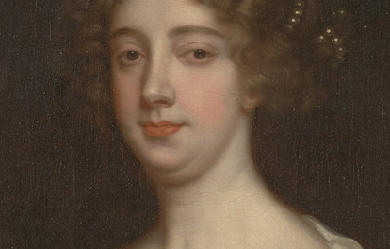

Aphra Behn (14 December 1640? April 1689) was an English playwright, poet, translator and fiction writer from the Restoration era. As one of the first English women to earn her living by her writing, she broke cultural barriers and served as a literary role model for later generations of women authors. Rising from obscurity, she came to the notice of Charles II, who employed her as a spy in Antwerp. Upon her return to London and a probable brief stay in debtors’ prison, she began writing for the stage. She belonged to a coterie of poets and famous libertines such as John Wilmot, Lord Rochester. She wrote under the pastoral pseudonym Astrea. During the turbulent political times of the Exclusion Crisis, she wrote an epilogue and prologue that brought her into legal trouble; she thereafter devoted most of her writing to prose genres and translations. A staunch supporter of the Stuart line, she declined an invitation from Bishop Burnet to write a welcoming poem to the new king William III. She died shortly after.She is remembered in Virginia Woolf’s A Room of One’s Own: “All women together ought to let flowers fall upon the tomb of Aphra Behn which is, most scandalously but rather appropriately, in Westminster Abbey, for it was she who earned them the right to speak their minds.” Her grave is not included in the Poets’ Corner but lies in the East Cloister near the steps to the church. Life and work Versions of her early life Information regarding Behn’s life is scant, especially regarding her early years. This may be due to intentional obscuring on Behn’s part. One version of Behn’s life tells that she was born to a barber named John Amis and his wife Amy. Another story has Behn born to a couple named Cooper. The Histories And Novels of the Late Ingenious Mrs. Behn (1696) states that Behn was born to Bartholomew Johnson, a barber, and Elizabeth Denham, a wet-nurse. Colonel Thomas Colepeper, the only person who claimed to have known her as a child, wrote in Adversaria that she was born at “Sturry or Canterbury” to a Mr Johnson and that she had a sister named Frances. Another contemporary, Anne Finch, wrote that Behn was born in Wye in Kent, the “Daughter to a Barber”. In some accounts the profile of her father fits Eaffrey Johnson.Behn was born during the buildup of the English Civil War, a child of the political tensions of the time. One version of Behn’s story has her travelling with a Bartholomew Johnson to Surinam. He was said to die on the journey, with his wife and children spending some months in the country, though there is no evidence of this. During this trip Behn said she met an African slave leader, whose story formed the basis for one of her most famous works, Oroonoko. It is possible that she acted a spy in the colony. There is little verifiable evidence to confirm any one story. In Oroonoko Behn gives herself the position of narrator and her first biographer accepted the assumption that Behn was the daughter of the lieutenant general of Surinam, as in the story. There is little evidence that this was the case, and none of her contemporaries acknowledge any aristocratic status. There is also no evidence that Oroonoko existed as an actual person or that any such slave revolt, as is featured in the story, really happened. Writer Germaine Greer has called Behn “a palimpsest; she has scratched herself out,” and biographer Janet Todd noted that Behn “has a lethal combination of obscurity, secrecy and staginess which makes her an uneasy fit for any narrative, speculative or factual. She is not so much a woman to be unmasked as an unending combination of masks”. It is notable that her name is not mentioned in tax or church records. During her lifetime she was also known as Ann Behn, Mrs Bean, agent 160 and Astrea. Career Shortly after her supposed return to England from Surinam in 1664, Behn may have married Johan Behn (also written as Johann and John Behn). He may have been a merchant of German or Dutch extraction, possibly from Hamburg. He died or the couple separated soon after 1664, however from this point the writer used “Mrs Behn” as her professional name.Behn may have had a Catholic upbringing. She once commented that she was “designed for a nun,” and the fact that she had so many Catholic connections, such as Henry Neville who was later arrested for his Catholicism, would have aroused suspicions during the anti-Catholic fervour of the 1680s. She was a monarchist, and her sympathy for the Stuarts, and particularly for the Catholic Duke of York may be demonstrated by her dedication of her play The Rover II to him after he had been exiled for the second time. Behn was dedicated to the restored King Charles II. As political parties emerged during this time, Behn became a Tory supporter.By 1666 Behn had become attached to the court, possibly through the influence of Thomas Culpeper and other associates. The Second Anglo-Dutch War had broken out between England and the Netherlands in 1665, and she was recruited as a political spy in Antwerp on behalf of King Charles II, possibly under the auspices of courtier Thomas Killigrew. This is the first well-documented account we have of her activities. Her code name is said to have been Astrea, a name under which she later published many of her writings. Her chief role was to establish an intimacy with William Scot, son of Thomas Scot, a regicide who had been executed in 1660. Scot was believed to be ready to become a spy in the English service and to report on the doings of the English exiles who were plotting against the King. Behn arrived in Bruges in July 1666, probably with two others, as London was wracked with plague and fire. Behn’s job was to turn Scot into a double agent, but there is evidence that Scot betrayed her to the Dutch.Behn’s exploits were not profitable however; the cost of living shocked her, and she was left unprepared. One month after arrival, she pawned her jewellry. King Charles was slow in paying (if he paid at all), either for her services or for her expenses whilst abroad. Money had to be borrowed so that Behn could return to London, where a year’s petitioning of Charles for payment was unsuccessful. It may be that she was never paid by the crown. A warrant was issued for her arrest, but there is no evidence it was served or that she went to prison for her debt, though apocryphally it is often given as part of her history. Forced by debt and her husband’s death, Behn began to work for the King’s Company and the Duke’s Company players as a scribe. She had, however, written poetry up until this point. While she is recorded to have written before she adopted her debt, John Palmer said in a review of her works that, “Mrs. Behn wrote for a livelihood. Playwriting was her refuge from starvation and a debtor’s prison.” The theatres that had been closed under Cromwell were now re-opening under Charles II, plays enjoying a revival. Her first play, The Forc’d Marriage, was staged in 1670, followed by The Amorous Prince (1671). After her third play, The Dutch Lover, failed, Behn falls off the public record for three years. It is speculated that she went travelling again, possibly in her capacity as a spy. She gradually moved towards comic works, which proved more commercially successful. Her most popular works included The Rover. Behn became friends with notable writers of the day, including John Dryden, Elizabeth Barry, John Hoyle, Thomas Otway and Edward Ravenscroft, and was acknowledged as a part of the circle of the Earl of Rochester. Behn often used her writings to attack the parliamentary Whigs claiming, “In public spirits call’d, good o’ th’ Commonwealth... So tho’ by different ways the fever seize... in all ’tis one and the same mad disease.” This was Behn’s reproach to parliament which had denied the king funds. Final years and death In 1688, in the year before her death, she published A Discovery of New Worlds, a translation of a French popularisation of astronomy, Entretiens sur la pluralité des mondes, by Bernard le Bovier de Fontenelle, written as a novel in a form similar to her own work, but with her new, religiously oriented preface. In all she would write and stage 19 plays, contribute to more, and become one of the first prolific, high-profile female dramatists in Britain. During the 1670s and 1680s she was one of the most productive playwrights in Britain, second only to Poet Laureate John Dryden.In her last four years, Behn’s health began to fail, beset by poverty and debt, but she continued to write ferociously, though it became increasingly hard for her to hold a pen. In her final days, she wrote the translation of the final book of Abraham Cowley’s Six Books of Plants. She died on 16 April 1689, and was buried in the East Cloister Westminster Abbey. The inscription on her tombstone reads: “Here lies a Proof that Wit can never be Defence enough against Mortality.” She was quoted as stating that she had led a “life dedicated to pleasure and poetry.” Published works Behn earned a living writing, one of the earliest Englishwoman to do so. After John Dryden she was the most prolific writer of the English Restoration. Behn was not the first woman in England to publish a play. In 1613 Lady Elizabeth Cary had published The Tragedy of Miriam, in the 1650s Margaret Cavendish published two volumes of plays, and in 1663 a translation of Corneille’s Pompey by Katherine Philips was performed in Dublin and London. Women had been excluded from theatre in the Elizabethan era, but in Restoration England they made up a significant part of the audience and professional actresses played the women’s parts. This changed the nature and themes of Restoration theatre.Behn’s first play The Forc’d Marriage was a romantic tragicomedy on arranged marriages and was staged by the Duke’s Company in September 1670. The performance ran for six nights, which was regarded as a good run for an unknown author. Six months later Behn’s play The Amorous Prince was successfully staged. Again, Behn used the play to comment on the harmful effects of arranged marriages. Behn did not hide the fact that she was a woman, instead she made a point of it. When in 1673 the Dorset Garden Theatre staged The Dutch Lover, critics sabotaged the play on the grounds that the author was a woman. Behn tackled the critics head on in Epistle to the Reader. She argued that women had been held back by their unjust exclusion from education, not their lack of ability. After a three-year publication pause, Behn published four plays in close succession. In 1676 she published Abdelazar, The Town Fop and The Rover. In early 1678 Sir Patient Fancy was published. This succession of box-office successes led to frequent attacks on Behn. She was attacked for her private life, the morality of her plays was questioned and she was accused of plagiarising The Rover. Behn countered these public attacks in the prefaces of her published plays. In the preface to Sir Patient Fancy she argued that she was being singled out because she was a woman, while male playwrights were free to live the most scandalous lives and write bawdy plays.Under Charles II of England prevailing Puritan ethics was reversed in the fashionable society of London. The King associated with playwrights that poured scorn on marriage and the idea of consistency in love. Among the King’s favourite was the Earl of Rochester John Wilmot, who became famous for his cynical libertinism. Behn was a friend of Wilmot and Behn became a bold proponent of sexual freedom for both women and men. Like her contemporary male libertines, she wrote freely about sex. In the infamous poem The Disappointment she wrote a comic account of male impotence from a woman’s perspective. Critics Lisa Zeitz and Peter Thoms contend that the poem “playfully and wittily questions conventional gender roles and the structures of oppression which they support”. In The Dutch Lover Behn forthrightly acknowledged female sexual desire. Critics of Behn were provided with ammunition because of her public liaison with John Hoyle, a bisexual lawyer who scandalised his contemporaries.By the late 1670s Behn was among the leading playwrights of England. Her plays were staged frequently and attended by the King. The Rover became a favourite at the King’s court. Behn became heavily involved in the political debate about the succession. Because Charles II had no heir a prolonged political crisis ensued. Mass hysteria commenced as in 1678 the rumoured Popish Plot suggested the King should be replaced with his Roman Catholic brother James. Political parties developed, the Whigs wanted to exclude James, while the Tories did not believe succession should be altered in any way. Charles II eventually dissolved the Cavalier Parliament and James II succeeded him in 1685. Behn supported the Tory position and in the two years between 1681 and 1682 produced five plays to discredit the Whigs. The London audience, mainly Tory sympathisers, attended the plays in large numbers. But Behn was arrested on the order of King Charles II when she used one of the plays to attack James Scott, Duke of Monmouth, the illegitimate son of the King.As audience numbers declined, theatres staged mainly old works to save costs. Nevertheless, Behn published The Luckey Chance in 1686. In response to the criticism levelled at they play she articulated a long and passionate defence of women writers. Her play The Emperor of the Moon was published and staged in 1687, it became one of her longest running plays. Behn stopped writing plays and turned to prose fiction. Today she is mostly known for the novels she wrote in the later part of her life. Her first novel was the three-part Love-Letters Between a Nobleman and His Sister, published between 1682 and 1687. The novels were inspired by a contemporary scandal, which saw Lord Grey elope with his sister-in-law Lady Henrietta Berkeley. At the time of publication Love Letters was very popular and went through more than 16 editions. Today Behn’s prose work is critically acknowledged as having been important to the development of the English novel. Following Behn’s death, new female dramatists such as Delarivier Manley, Mary Pix, Susanna Centlivre and Catherine Trotter acknowledged Behn as their most vital predecessor, who opened up public space for women writers.In 1688, less than a year before her death, Behn published Oroonoko: or, The Royal Oroonoko, the story of the enslaved Oroonoko and his love Imoinda. It was based on Behn’s travel to Surinam twenty years earlier. The novel became a great success. In 1696 it was adapted for the stage by Thomas Southerne and continuously performed throughout the 18th century. In 1745 the novel was translated into French, going through seven French editions. As abolitionism gathered pace in the late 18th century the novel was celebrated as the first anti-slavery novel. Legacy and re-evaluation After her death in 1689 Behn’s literary work was marginalised and dismissed outright. Until the mid-20th century Behn was repeatedly dismissed as morally depraved minor writer. In the 18th century her literary work was scandalised as lewd by Thomas Brown, William Wycherley, Richard Steele and John Duncombe. Alexander Pope penned the famous lines “The stage how loosely does Astrea tread, Who fairly puts all characters to bed!”. In the 19th century Mary Hays, Matilda Betham, Alexander Dyce, Jane Williams and Julia Kavanagh decided that Behn’s writings were unfit to read, because they were corrupt and deplorable. Among the few critics who believed that Behn was an important writer were Leigh Hunt, William Forsyth and William Henry Hudson.The life and times of Behn were recounted by a long line of biographers, among them Dyce, Edmund Gosse, Ernest Bernbaum, Montague Summers, Vita Sackville-West, Virginia Woolf, George Woodcock, William J. Cameron and Frederick Link.Of Behn’s considerable literary output only Oroonoko was seriously considered by literary scholars. The late 18th century the novel is regarded as one of the first abolitionist and humanitarian novel published in the English language. It is credited as precursor to Jean-Jaques Rousseau’s Discourses on Inequality. Since the 1970s Behn’s literary works have been re-evaluated by feminist critics and writers. Behn was rediscovered as a significant female writer by Maureen Duffy, Angeline Goreau, Ruth Perry, Hilda Lee Smith, Moira Ferguson, Jane Spencer, Dale Spender, Elaine Hobby and Janet Todd. This led to the reprinting of her works. The Rover was republished in 1967, Oroonoko was republished in 1973, Love Letters between a Nobleman and His Sisters was published again in 1987 and The Lucky Chance was reprinted in 1988. Montague Summers, an author of scholarly works on the English drama of the 17th century, published a six-volume collection of her work, in hopes of rehabilitating her reputation. Summers was fiercely passionate about the work of Behn and found himself incredibly devoted to the appreciation of 17th century literature. Felix Schelling wrote in The Cambridge History of English Literature, that she was “a very gifted woman, compelled to write for bread in an age in which literature... catered habitually to the lowest and most depraved of human inclinations,” and that, “Her success depended upon her ability to write like a man.” Edmund Gosse remarked that she was, “...the George Sand of the Restoration”.The criticism of Behn’s poetry focuses on the themes of gender, sexuality, femininity, pleasure, and love. A feminist critique tends to focus on Behn’s inclusion of female pleasure and sexuality in her poetry, which was a radical concept at the time she was writing. One critic, Alison Conway, views Behn as instrumental to the formation of modern thought around the female gender and sexuality: "Behn wrote about these subjects before the technologies of sexuality we now associate were in place, which is, in part, why she proves so hard to situate in the trajectories most familiar to us”. Virginia Woolf wrote, in A Room of One’s Own: All women together, ought to let flowers fall upon the grave of Aphra Behn... for it was she who earned them the right to speak their minds... Behn proved that money could be made by writing at the sacrifice, perhaps, of certain agreeable qualities; and so by degrees writing became not merely a sign of folly and a distracted mind but was of practical importance. Adaptations of Behn in Literature Behn’s life has been adapted for the stage in the 2014 play Empress of the Moon: The Lives of Aphra Behn by Chris Braak, and the 2015 play [exit Mrs Behn] or, The Leo Play by Christopher VanderArk. She is one of the characters in the 2010 play Or, by Liz Duffy Adams. Behn appears as a character in Daniel O’Mahony’s Newtons Sleep, in Phillip Jose Farmer’s The Magic Labyrinth and Gods of Riverworld, in Molly Brown’s Invitation to a Funeral (1999), and in Diana Norman’s The Vizard Mask. She is referred to in Patrick O’Brian’s novel Desolation Island.
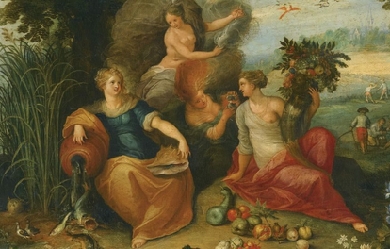
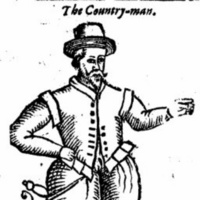
Nicholas Breton (also Britton or Brittaine) (1545–1626), English poet and novelist, belonged to an old family settled at Layer Breton, Essex. Life His father, William Breton, a London merchant who had made a considerable fortune, died in 1559, and the widow (née Elizabeth Bacon) married the poet George Gascoigne before her sons had attained their majority. Nicholas Breton was probably born at the “capitall mansion house” in Red Cross Street, in the parish of St Giles without Cripplegate, mentioned in his father’s will. There is no official record of his residence at the university, but the diary of the Rev. Richard Madox tells us that he was at Antwerp in 1583 and was “once of Oriel College.” He married Ann Sutton in 1593, and had a family. He is supposed to have died shortly after the publication of his last work, Fantastickes (1626). Breton found a patron in Mary, countess of Pembroke, and wrote much in her honour until 1601, when she seems to have withdrawn her favour. It is probably safe to supplement the meagre record of his life by accepting as autobiographical some of the letters signed N.B. in A Poste with a Packet of Mad Letters (1603, enlarged 1637); the 19th letter of the second part contains a general complaint of many griefs, and proceeds as follows: “Hath another been wounded in the warres, fared hard, lain in a cold bed many a bitter storme, and beene at many a hard banquet? all these have I; another imprisoned? so have I; another long been sicke? so have I; another plagued with an unquiet life? so have I; another indebted to his hearts griefe, and fame would pay and cannot? so am I.” Works * Breton was a prolific author of considerable versatility and gift, popular with his contemporaries, and forgotten by the next generation. His work consists of religious and pastoral poems, satires, and a number of miscellaneous prose tracts. His religious poems are sometimes wearisome by their excess of fluency and sweetness, but they are evidently the expression of a devout and earnest mind. His lyrics are pure and fresh, and his romances, though full of conceits, are pleasant reading, remarkably free from grossness. His praise of the Virgin and his references to Mary Magdalene have suggested that he was a Roman Catholic, but his prose writings abundantly prove that he was an ardent Anglican. * Breton had little gift for satire, and his best work is to be found in his pastoral poetry. His Passionate Shepheard (1604) is full of sunshine and fresh air, and of unaffected gaiety. The third pastoral in this book—"Who can live in heart so glad As the merrie country lad"—is well known; with some other of Breton’s daintiest poems, among them the lullaby, “Come little babe, come silly soule,” (This poem, however, comes from The Arbor of Amorous Devises, which is only in part Breton’s work.)—it is incorporated in A. H. Bullen’s Lyrics from Elizabethan Romances (1890). His keen observation of country life appears also in his prose idyll, Wits Trenckrnour, “a conference betwixt a scholler and an angler,” and in his Fantastickes, a series of short prose pictures of the months, the Christian festivals and the hours, which throw much light on the customs of the times. Most of Breton’s books are very rare and have great bibliographical value. His works, with the exception of some belonging to private owners, were collected by Dr AB Grosart in the Chertsey Worthies Library in 1879, with an elaborate introduction quoting the documents for the poet’s history. * Breton’s poetical works, the titles of which are here somewhat abbreviated, include: * The Workes of a Young Wit (1577) * A Floorish upon Fancie (1577) * The Pilgrimage to Paradise (1592), with a prefatory letter by John Case * The Countess of Penbrook’s Passion (manuscript), first printed by JO Halliwell-Phillipps in 1853 [1] * Pasquil’s Fooles cappe (entered at Stationers’ Hall in 1600) * Pasquil’s Mistresse (1600) * Pasquil’s Passe and Passeth Not (1600) * Melancholike Humours (1600) - reprinted by Scholartis Press London. 1929. * Marie Magdalen’s Love: a Solemne Passion of the Soules Love (1595), the first part of which, a prose treatise, is probably by another hand; the second part, a poem in six-lined stanza, is certainly by Breton * A Divine Poem, including “The Ravisht Soul” and “The Blessed Weeper” (1601) * An Excellent Poem, upon the Longing of a Blessed heart (1601) * The Soules Heavenly Exercise (1601) * The Soules Harmony (1602) * Olde Madcappe newe Gaily mawfrey (1602) * The Mother’s Blessing (1602) * A True Description of Unthankfulnesse (1602) * The Passionate Shepheard (1604) * The Souies Immortail Crowne (1605) * The Honour of Valour (1605) * An Invective against Treason; I would and I would not (1614) * Bryton’s Bowre of Delights (1591), edited by Dr Grosart in 1893, an unauthorized publication which contained some poems disclaimed by Breton * The Arbor of Amorous Devises (entered at Stationers’ Hall, 1594), only in part Breton’s * contributions to England’s Helicon and other miscellanies of verse. * Of his twenty-two prose tracts may be mentioned Wit’s Trenchmour (1597), The Wil of Wit (1599), A Poste with a Packet of Mad Letters (1602-6). Sir Philip Sidney’s Ourania by N. B. (1606), A Mad World, my Masters, Adventures of Two Excellent Princes, Grimello’s Fortunes (1603), Strange News out of Divers Countries (1622), etc.; Mary Magdalen’s Lamentations (1604), and The Passion of a Discontented Mind (1601), are sometimes, but erroneously, ascribed to Breton. Footnotes References Wikipedia—https://en.wikipedia.org/wiki/Nicholas_Breton
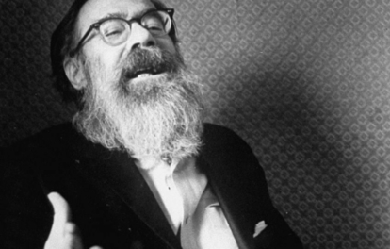
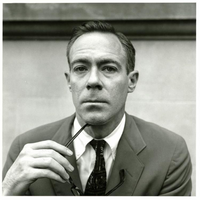
John Allyn Berryman (October 25, 1914– January 7, 1972) was an American poet and scholar, born in McAlester, Oklahoma. He was a major figure in American poetry in the second half of the 20th century and was considered a key figure in the Confessional school of poetry. His best-known work is The Dream Songs. Life and career John Berryman was born John Allyn Smith, Jr. in Oklahoma where he was raised until the age of ten, when his father, John Smith, a banker, and his mother, Martha (also known as Peggy), a schoolteacher, moved to Tampa, Florida. In 1926, in Florida, when the poet was eleven years old, his father shot and killed himself, Berryman was haunted by his father’s death for the rest of his life and would later write about his struggle to come to terms with it in his book The Dream Songs. In "Dream Song #143", he wrote, "That mad drive [to commit suicide] wiped out my childhood. I put him down/while all the same on forty years I love him/stashed in Oklahoma/besides his brother Will". In "Dream Song #145", he also wrote the following lines about his father: he only, very early in the morning, rose with his gun and went outdoors by my window and did what was needed. I cannot read that wretched mind, so strong & so undone. I've always tried. I–I'm trying to forgive whose frantic passage, when he could not live an instant longer,in the summer dawn left Henry to live on. Similarly, in Dream Song #384, Berryman wrote: The marker slants, flowerless, day's almost done, I stand above my father's grave with rage, often, often before I've made this awful pilgrimage to one who cannot visit me, who tore his page out: I come back for more, I spit upon this dreadful bankers grave who shot his heart out in a Florida dawn After his father’s death at the rear entrance to Kipling Arms, where the Smiths rented an apartment, the poet’s mother, within months, married John Angus McAlpin Berryman in New York City. The poet was renamed John Allyn McAlpin Berryman. Berryman’s mother also changed her first name from Peggy to Jill. Although his stepfather would later divorce his mother, Berryman and his stepfather stayed on good terms. With both his mother and stepfather working, his mother decided to send him away to the South Kent School, a private boarding school in Connecticut. Then Berryman went on to college at Columbia College where he was president of the Philolexian Society, joined the Boar’s Head Society, edited the Columbia Review, and studied under the literary scholar and poet Mark Van Doren. Berryman would later credit Van Doren with sparking his interest in writing poetry seriously. For two years, Berryman also studied overseas at Clare College, Cambridge, on a Kellett Fellowship, awarded by Columbia. He graduated in 1936. Regarding Berryman’s earliest success in poetry, the Norton Anthology of Modern Poetry editors note that "Berryman’s early work formed part of a volume entitled Five Young American Poets, published by New Directions in 1940". One of the other young poets included in the book was Randall Jarrell. Berryman would soon publish some of this early verse in his first book, also with New Directions Publishing, simply titled Poems, in 1942. However, his first mature collection of poems, The Dispossessed, appeared six years later, published by William Sloane Associates. The book received largely negative reviews from poets like Randall Jarrell who wrote, in The Nation, that Berryman was "a complicated, nervous, and intelligent [poet]" whose poetry in The Dispossessed was too derivative of W. B. Yeats. Berryman would later concur with this assessment of his early work, stating, “I didn’t want to be like Yeats; I wanted to be Yeats.” In October 1942, Berryman married Eileen Mulligan (later Simpson) in a ceremony at St. Patrick’s Catherdral, with poet Mark Van Doren as his best man. The pair moved to Beacon Hill, where Berryman lectured at Harvard. The marriage ended in 1953 (a divorce was formalized in 1956), when Simpson finally grew weary of tolerating Berryman’s affairs and acting as “net-holder” throughout his self-destructive personal crises. Simpson would memorialize her time with Berryman and his circle in her 1982 book Poets in Their Youth. In 1947, Berryman started an affair with a married woman named Chris, documented in a long sonnet sequence that he refrained from publishing, in part, because publication of the sonnets would have revealed the affair to his wife. However, he did eventually decide to publish the work, titled Berryman’s Sonnets, in 1967. The work included over one hundred sonnets. In 1950, Berryman published a biography of the fiction writer and poet Stephen Crane whom he greatly admired becoming, “the only biography by a leading American poet of the great American writer, Stephen Crane.” This book was followed by his next significant poem, Homage to Mistress Bradstreet (1956), which featured illustrations by the artist Ben Shahn and was Berryman’s first poem to receive “national attention” and a positive response from critics. Edmund Wilson wrote that it was “the most distinguished long poem by an American since T. S. Eliot’s The Waste Land.” When “Homage to Mistress Bradstreet and Other Poems” was published in 1959, the poet Conrad Aiken praised the shorter poems in the book which he thought were actually better than “Homage to Mistress Bradstreet”. Despite the relative success of his third book of verse, Berryman’s great poetic breakthrough occurred after he published 77 Dream Songs in 1964. It won the 1965 Pulitzer Prize for poetry and solidified Berryman’s standing as one of the most important poets of the post-World War II generation that included Robert Lowell, Elizabeth Bishop, and Delmore Schwartz. Soon afterwards, Berryman started receiving a great deal of national attention from the press, from arts organizations, and even from the White House which sent him an invitation to dine with President Lyndon B. Johnson (though Berryman had to decline because he was in Ireland at the time). Berryman was elected a Fellow of the American Academy of Arts and Sciences in 1967, and that same year Life magazine ran a feature story on him. Also, that year the newly created National Endowment for the Arts awarded him a ten thousand dollar grant (though he admitted, when asked about the award by a Minneapolis reporter, that he had never heard of the organization before). Berryman also continued to work on the “dream song” poems at a feverish pace and published a second, significantly longer, volume entitled His Toy, His Dream, His Rest, in 1968, which won the National Book Award for Poetry and the Bollingen Prize. The following year Berryman republished 77 Dreams Songs and His Toy, His Dream, His Rest as one book titled The Dream Songs, in which the character Henry serves as Berryman’s alter ego. But in Love & Fame (1970), he dropped the mask of Henry to write more plainly about his life. Responses to the poems from critics and most of Berryman’s peers ranged from tepid, at best, to hostile; now the collection is generally “considered a minor work”. The character of Henry reappeared in a couple of poems published in Delusions Etc., (1972), Berryman’s last collection, which focused on his religious concerns and his own spiritual rebirth. The book was published posthumously and, like its predecessor, Love & Fame, it is considered a minor work. Berryman taught or lectured at a number of universities including University of Iowa (in their Writer’s Workshop), Harvard University, Princeton University, the University of Cincinnati, and the University of Minnesota, where he spent the majority of his career, except for his sabbatical year in 1962-3, when he taught at Brown University. Some of his illustrious students included W. D. Snodgrass, William Dickey, Donald Justice, Philip Levine, Robert Dana, Jane Cooper, Donald Finkel, and Henri Coulette. Philip Levine stated, in a recorded interview from 2009, that Berryman took his class extremely seriously and that "he was entrancing... magnetic and inspiring and very hard on [his students’] work... [and] he was [also] the best teacher that I ever had". Berryman was fired from the University of Iowa after a fight with his landlord led to him being arrested, jailed overnight, and fined for disorderly conduct and public intoxication. He turned to his friend, the poet Allen Tate, who helped him get his teaching job at the University of Minnesota. Berryman was married three times. And according to the editors of The Norton Anthology of Modern Poetry, he lived turbulently. During one of the many times he was hospitalized in order to detox from alcohol abuse, in 1970, he experienced what he termed “a sort of religious conversion”. According to his biographer Paul Mariani, Berryman experienced “a sudden and radical shift from a belief in a transcendent God... to a belief in a God who cared for the individual fates of human beings and who even interceded for them.” Nevertheless, Berryman continued to abuse alcohol and to struggle with depression, as he had throughout much of his adult life, and on the morning of January 7, 1972, he killed himself by jumping from the Washington Avenue Bridge in Minneapolis, Minnesota, onto the west bank of the Mississippi River. Newspaper reports of the event indicate that he missed the water and smothered in mud. Poetry Berryman’s poetry, which often revolved around the sordid details of his personal problems (in The Dream Songs but also in his other poems as well) is closely associated with the Confessional poetry movement. In this sense, his poetry had much in common with the poetry of his friend, Robert Lowell. The editors of The Norton Anthology of Modern Poetry note that “the influence of Yeats, Auden, Hopkins, Crane, and Pound on him was strong, and Berryman’s own voice—by turns nerve-racked and sportive—took some time to be heard.” Berryman’s first major work, in which he began to develop his own unique style of writing, was Homage to Mistress Bradstreet, published in 1956. In the long, title poem, which first appeared in Partisan Review in 1953, Berryman addressed the 17th century American poet Anne Bradstreet, combining the history of her life with his own fantasies about her (and inserting himself into the poem). Joel Athey noted, “This difficult poem, a tribute to the Puritan poet of colonial America, took Berryman five years to complete and demanded much from the reader when it first appeared with no notes. The Times Literary Supplement hailed it as a path-breaking masterpiece; poet Robert Fitzgerald called it ‘the poem of his generation.’” Edward Hirsch observed that "the 57 stanzas of Homage to Mistress Bradstreet combine the concentration of an extended lyric with the erudition and amplitude of a historical novel". Berryman’s major poetic breakthrough came after he began to publish the first volume of The Dream Songs, 77 Dream Songs, in 1964. The dream song form consisted of short, eighteen-line lyric poems in three stanzas. The poems are written in free verse although some stanzas contain irregular rhyme. 77 Dream Songs (and its sequel His Toy, His Dream, His Rest) centers on a character named “Henry” who bears a striking resemblance to John Berryman. However, Berryman was careful about making sure that his readers realized that “Henry” was not his equivalent, but rather a fictional version of himself (or a literary alter ego). In an interview, Berryman stated, “Henry does resemble me, and I resemble Henry; but on the other hand I am not Henry. You know, I pay income tax; Henry pays no income tax. And bats come over and they stall in my hair—and fuck them, I’m not Henry; Henry doesn’t have any bats.” In The New York Times review of 77 Dream Songs, John Malcolm Brinnin praised the book, declaring that "[the book’s] excellence calls for celebration". And in The New York Review of Books, Robert Lowell also reviewed the book, writing, “At first the brain aches and freezes at so much darkness, disorder and oddness. After a while, the repeated situations and their racy jabber become more and more enjoyable, although even now I wouldn’t trust myself to paraphrase accurately at least half the sections.” In response to the perceived difficulty of the dream songs, in his 366th “Dream Song”, Berryman facetiously wrote, "These Songs are not meant to be understood, you understand. / They are only meant to terrify & comfort". In His Toy, His Dream, His Rest, many of the dream songs are elegies for Berryman’s recently deceased poet friends, including Delmore Schwartz, Randall Jarrell, and Theodore Roethke. Since this volume contained four times the number of poems that appeared in the previous volume, Berryman covered a lot more subject matter. For instance, in addition to the elegies, Berryman writes about his trip to Ireland as well as his own burgeoning literary fame. Berryman’s last two volumes of poetry, Love & Fame and Delusions, Etc. featured free-verse poems that were much more straightforward and less idiosyncratic than The Dream Songs. Prior to the publication of Love & Fame, Berryman sent his manuscript to several peers for feedback, including the poets Adrienne Rich and Richard Wilbur, both of whom were disappointed with the poems which they considered inferior to the poems in The Dream Songs. However, a number of Berryman’s old friends and supporters, including the novelist Saul Bellow and the poets Robert Lowell and William Meredith, offered high praise for a number of the Love & Fame poems. Both Love & Fame and Delusions, Etc. were more openly “confessional” than Berryman’s earlier verse, and since he embraced religion when he wrote these volumes, he also explored the nature of his spiritual rebirth in poems like “Eleven Addresses to the Lord” (which Lowell thought was one of Berryman’s best poems and “one of the great poems of the age”), as a well as “Certainty Before Lunch”. In 1977 John Haffenden published Henry’s Fate & Other Poems, a selection of dream songs that Berryman wrote after His Toy, His Dream, His Rest, but had never published. In reviewing the book, Time magazine noted, “Posthumous selections of unpublished poetry should be viewed suspiciously. The dead poet may have had good aesthetic reasons for keeping some of his work to himself. Fortunately, Henry’s Fate does not malign the memory of John Berryman”. Berryman’s Collected Poems—1937-1971 edited and introduced by Charles Thornbury, was published in 1989. However, Robert Giroux decided to leave out The Dream Songs from the collection. In his review of the Collected Poems, Edward Hirsch commented on this decision, stating, "It is obviously practical to continue to publish the 385 dream songs separately, but reading the Collected Poems without them is a little like eating a seven-course meal without a main course." Hirsch also notes that, "[Collected Poems features] a thorough nine-part introduction and a chronology as well as helpful appendixes that include Berryman’s published prefaces, notes and dedications; a section of editor’s notes, guidelines and procedures; and an account of the poems in their final stages of composition and publication.” In 2004, the Library of America published John Berryman: Selected Poems, edited by the poet Kevin Young. In Poetry magazine, David Orr wrote: Young includes all the Greatest Hits [from Berryman’s career]... but there are also substantial excerpts from Berryman’s Sonnets (the peculiar book that appeared after The Dream Songs, but was written long before) and Berryman’s later, overtly religious poetry. Young argues that “if his middle, elegiac period... is most in need of rediscovery, then these late poems are most in need of redemption.” It’s a good point. Although portions of Berryman’s late work are sloppy and erratic, these poems help clarify the spiritual struggle that motivates and sustains his best writing. After surveying Berryman’s career and accomplishments, the editors of The Norton Anthology of Modern Poetry stated, “What seems likely to survive of his poetry is its pungent and many-leveled portrait of a complex personality which, for all its eccentricity, stayed close to the center of the intellectual and emotional life of the mid-century and after.” In popular culture The ghost of John Berryman is a character in Thomas Disch’s novel The Businessman: A Tale of Terror, published in 1984. The Hold Steady’s song “Stuck Between Stations” from the 2006 album Boys and Girls in America relates a loose rendition of Berryman’s death, describing the isolation he felt, despite his critical acclaim, and depicting him walking with “the devil” on the Washington Avenue Bridge where he committed suicide. Okkervil River’s song “John Allyn Smith Sails” from their 2007 album The Stage Names is about John Berryman. Australian singer/songwriter Nick Cave has admiringly referenced Berryman in the song “We Call Upon the Author” from the 2007 album Dig, Lazarus, Dig!!!. Phish bassist Mike Gordon’s side-project band has performed "Dream Song 22-'Of 1826", releasing it on a live album, The Egg. Additionally, on March 30, 2014, their show featured a rendition of “The Poet’s Final Instructions”. Berryman and his poem Dream Song 235 is referenced in Elizabeth Strout’s novel and HBO’s adaption of Olive Kitteridge with the quote "Save us from shotguns & fathers’ suicides.” Berryman and his poem “The Curse” are referenced in the prologue of Tracy Letts’s play August: Osage County by the character Beverly, a poet who later commits suicide. Bibliography * Poems. Norfolk, Ct.: New Directions Press, 1942. * The Dispossessed. New York: William Sloan Associates, 1948. * Stephen Crane. New York: Sloan, 1950. * Homage to Mistress Bradstreet. New York: Farrar, Straus & Giroux, 1956. * 77 Dream Songs. New York: Farrar, Straus & Giroux, 1964. * Berryman’s Sonnets. New York: Farrar, Straus & Giroux, 1967. * His Toy, His Dream His Rest. New York: Farrar, Straus & Giroux, 1968. * The Dream Songs. New York: Farrar, Straus & Giroux, 1969. * Love & Fame. New York: Farrar, Straus & Giroux, 1970. * Delusions, Etc. New York: Farrar, Straus & Giroux, 1972. * Recovery. New York: Farrar, Straus & Giroux, 1973. * The Freedom of the Poet. New York: Farrar, Straus, & Giroux, 1976. * Henry’s Fate & Other Poems, 1967-1972. New York: Farrar, Straus, & Giroux, 1977. * Collected Poems 1937-1971. Ed. Charles Thornbury. New York: Farrar, Straus & Giroux, 1989. * Berryman’s Shakespeare. Ed. John Haffenden. New York: Farrar, Straus & Giroux, 1999. * Selected Poems. Ed. Kevin Young. New York: Library of America, 2004. * The Heart Is Strange. Ed. Daniel Swift. New York: Farrar, Straus & Giroux, 2014. References Wikipedia—https://en.wikipedia.org/wiki/John_Berryman
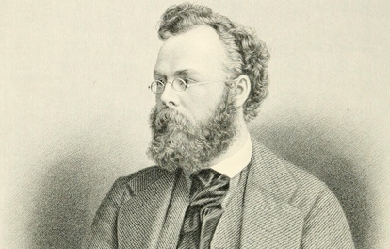
Robert Williams Buchanan (18 August 1841 – 10 June 1901) was a Scottish poet, novelist and dramatist. He was the son of Robert Buchanan (1813–1866), Owenite lecturer and journalist, and was born at Caverswall, Staffordshire, England. Buchanan senior, a native of Ayr, Scotland, lived for some years in Manchester, then moved to Glasgow, where Buchanan junior was educated, at the high school and the university, one of his fellow-students being the poet David Gray. His essay on Gray, originally published in the Cornhill Magazine, tells the story of their close friendship, and of their journey to London in 1860 in search of fame.


